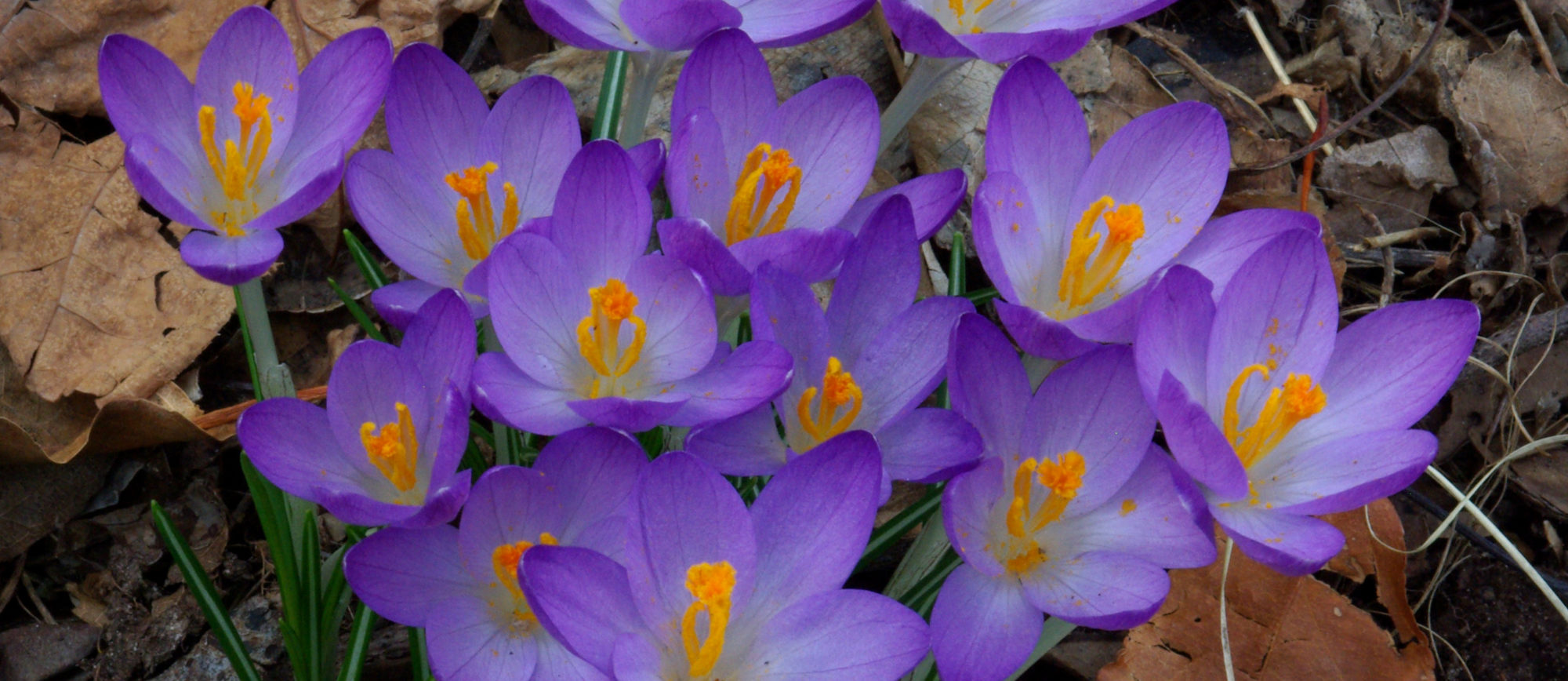Baccarat Pansies: Pansies were Baccarat’s bestselling weights in the Classical Period and their most expensive. That is good for collectors because a wonderful selection of assorted pansy weights are available for the modern collector for less than the cost of many weights now being made. The pansy held special meaning in 19thCentury France for two reasons – first, the name in French translates to “thought”. Second; the pansy was, and still is, associated with Napoleon Bonaparte. I believe these two reasons are intertwined – the pansy symbolized that the French people were thinking of Napoleon (that was before he fell from grace for some). A gift of a pansy weight also meant that the giver was thinking of the recipient. And as it happens, the pansy makes a perfect flower in form and color for the paperweight shape. The Baccarat glassworks continued to make their top selling pansy paperweights sporadically after The Classical Period. The location in the Alsace/Lorraine Region was an area of great turmoil during those years. It suffered through the Franco-Prussian Wars—after which it was part of Germany—and World War 1—after which it was back in France—and World War II in which it was the center of many battles and great destruction. The antique Baccarat pansy weights are generally assigned to one of three types—Types 1, 2, and 3, predictably, but there is abundant room for further dissection. Some suggest a 4th category for Baccarat’s most recent, pre-war examples from the 20s and 30s. I feel that more research needs to be done to make a clear differentiation between the Type 3s and any subsequent type or variety. For now it is too ill-defined in my opinion. Within all types there are many variations. (see Paul Dunlop’s book – he has one with Type 1 lower petals and Type 2 lower petals as the upper petals.) Type 1 is the rarest and has blue and white arrow canes as the lower petals. Type 2 is second most rare (Dunlop estimates 5%) and has thick bands of purple or blue color in the lower petals and no lines in the yellow. Type 3 is the most common and has lines in the yellow.
Note 1: Baccarat weights from the 1920s and 1930s are often incorrectly referred to as being from the “Dupont Period”. The name Dupont is not based in evidence. It was probably invented as a marketing tool for these weights which are generally felt among collectors to be inferior to their earlier cousins. Per Dunlop, the records at Baccarat show that a man named Louis Idoux made pansy weights at Baccarat in the 1920s and early 1930s. There is no record of an employee named Dupont. Dunlop describes the latter Baccarat pansies: resembling Type 3 pansies “but the weights are generally smaller and have a lower, flatter profile. The flower itself is flatter and rigid, with lower petals which have an opaque butterscotch color as opposed to the brighter yellow of the earlier examples.” These are described by Kulles as having “squarish upper petals that are smaller than the antique examples; the lower petals are a muddy amber color.” It seems to me that the issue of the color of the lower petals has led to much confusion, and I expect that Baccarat made Type 3 pansy weights with a more-or-less butterscotch color as early as the nineteenth century. I’d like to ask Mr. Idoux if he concocted the yellow color he employed or just used what was on hand, left over from who-knows-when … 1860? 1875? 1890? 1910? Some weights that have butterscotchy color are in all other respects identical to the Classical Period weights. It is easy to recognize at least some of the inferior quality Baccarat pansies from the 1920s and 1930s. And there is no good reason to be prejudiced against a wonderfully made Baccarat pansy weight just because the lower petals are more butterscotch than bland pale yellow. The butterscotch ones have a nice transparency to their upper layer. This is all interesting stuff with room for future study.
Note 2:
Baccarat pansy weights are seen in catalogs from 1907.
Note 3. Is it ironic that the most popular floral glass paperweight of the
Classical Period is now the most common simply because it was so popular?
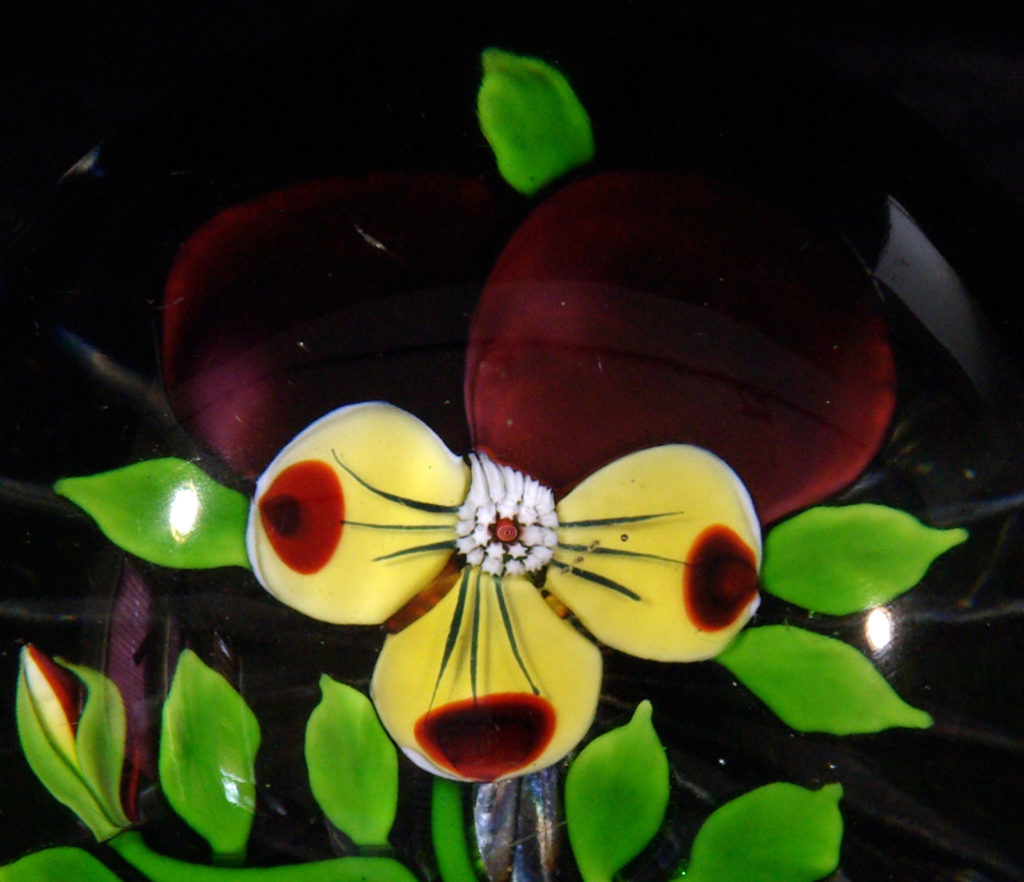


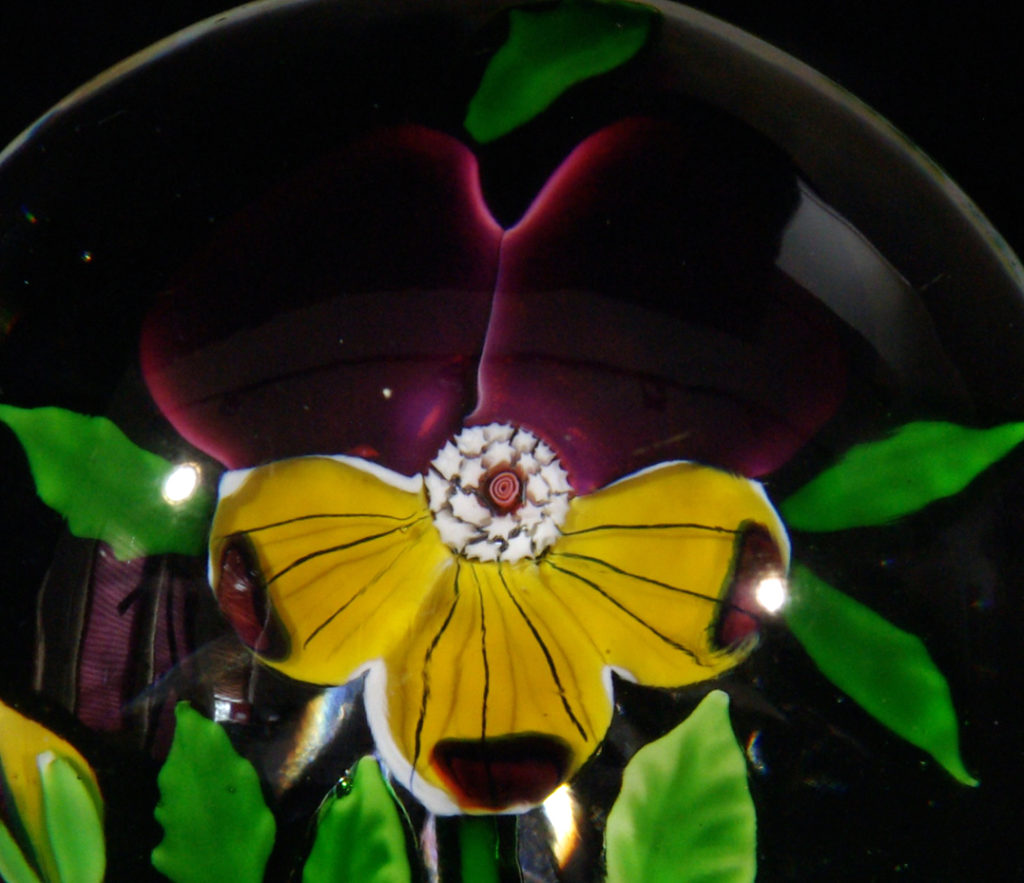
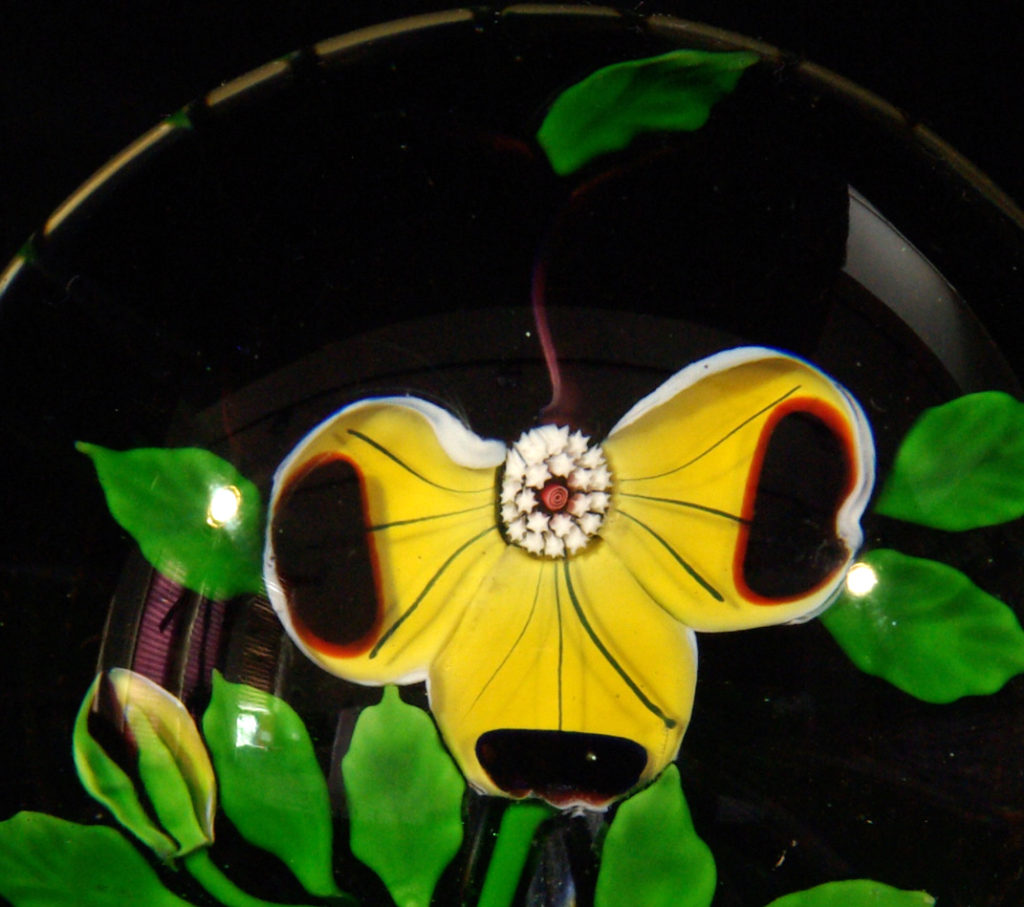


Type 3s range considerably in color, all in a range of yellows. The images above are examples.
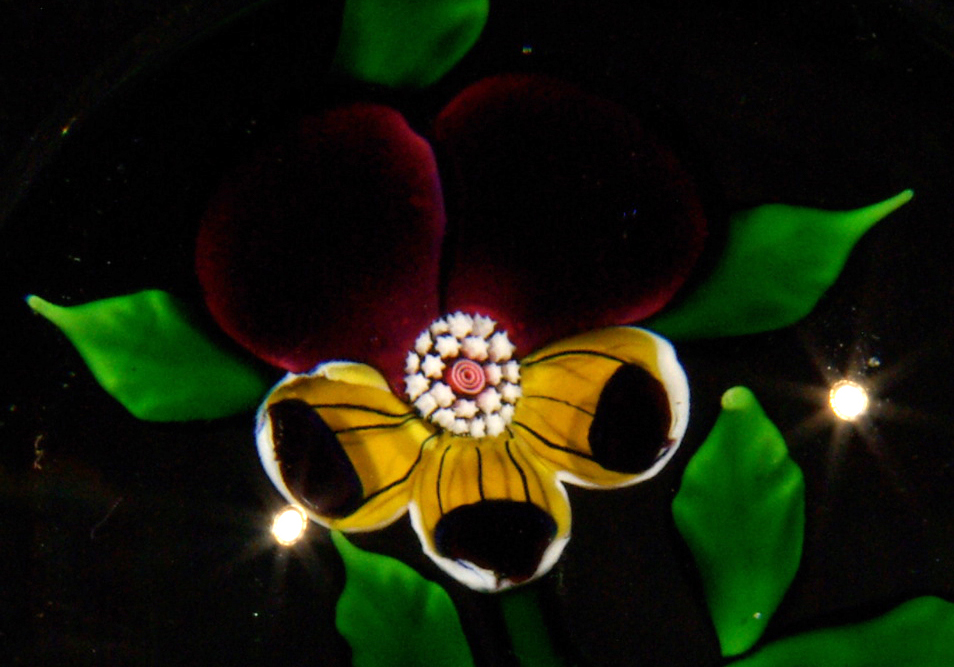
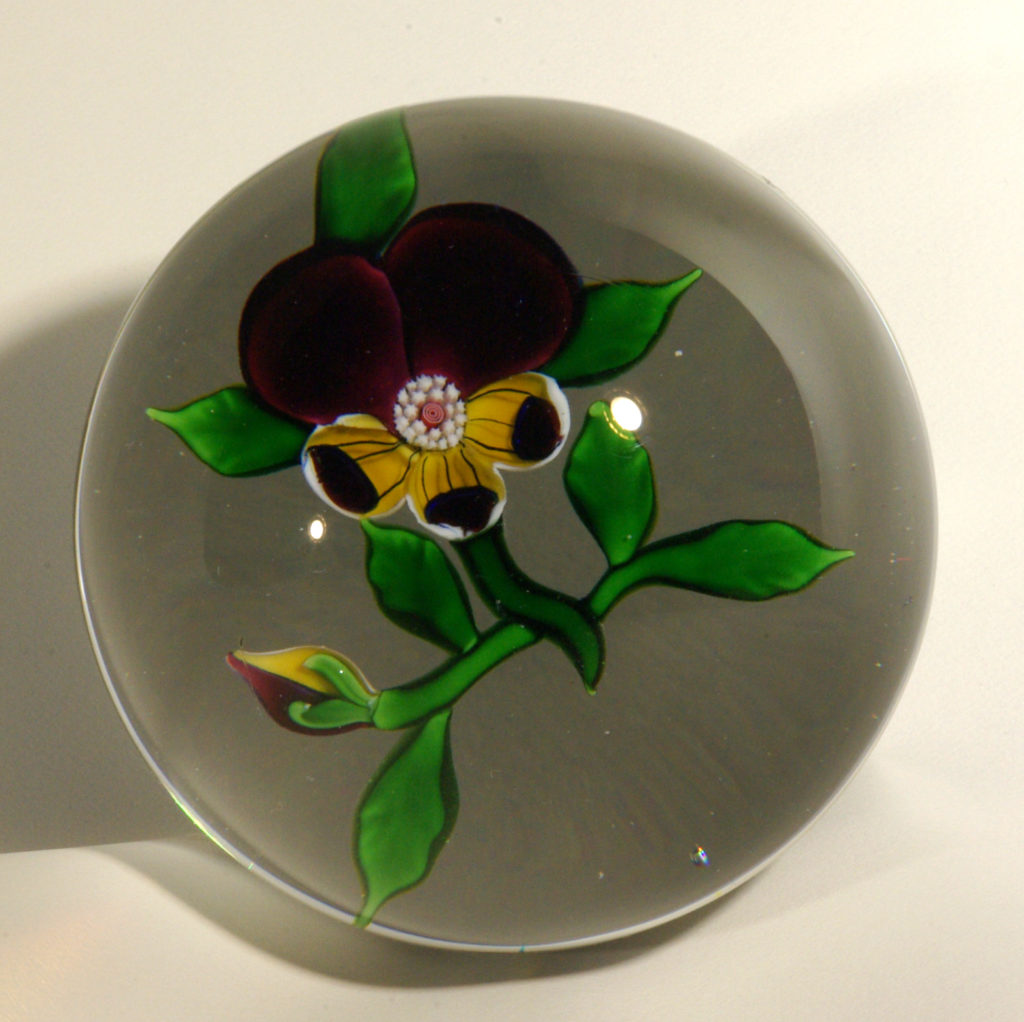

PW2292. Baccarat Antique Museum Piece. Beautifully made and well-proportioned pansy. This is a real gem. 2 5/8 inches in diameter, 2 inches tall; fifteen ounces. Condition is excellent/as if it just came off the shelf at a fine goods store in Paris in 1850. $500
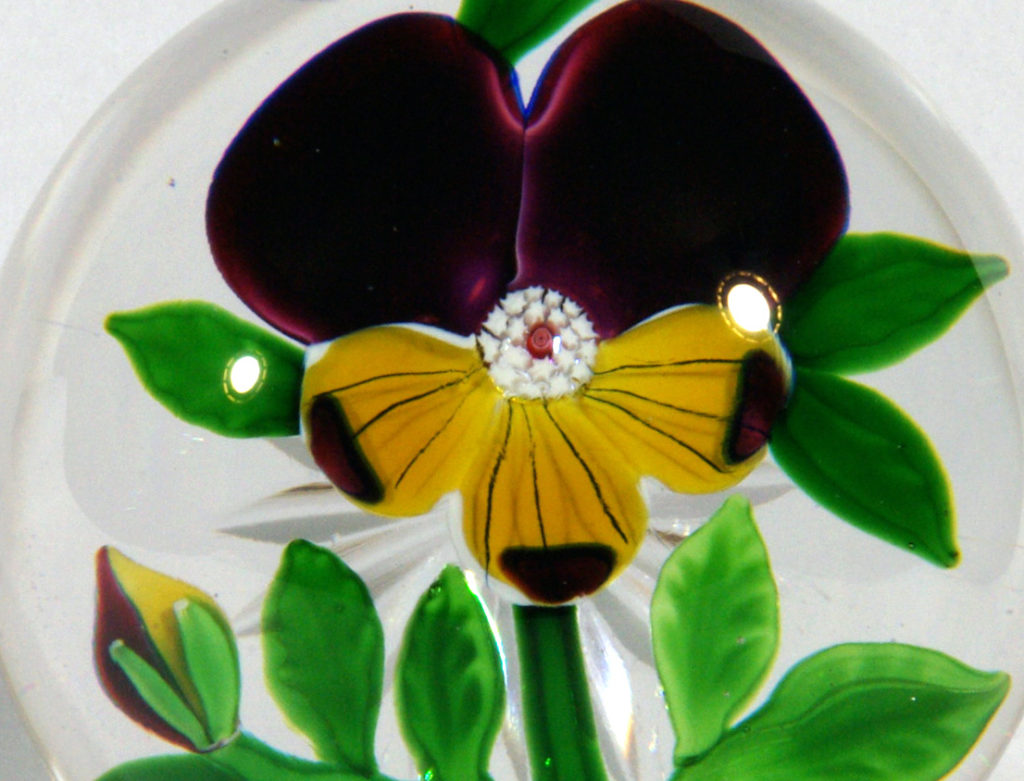
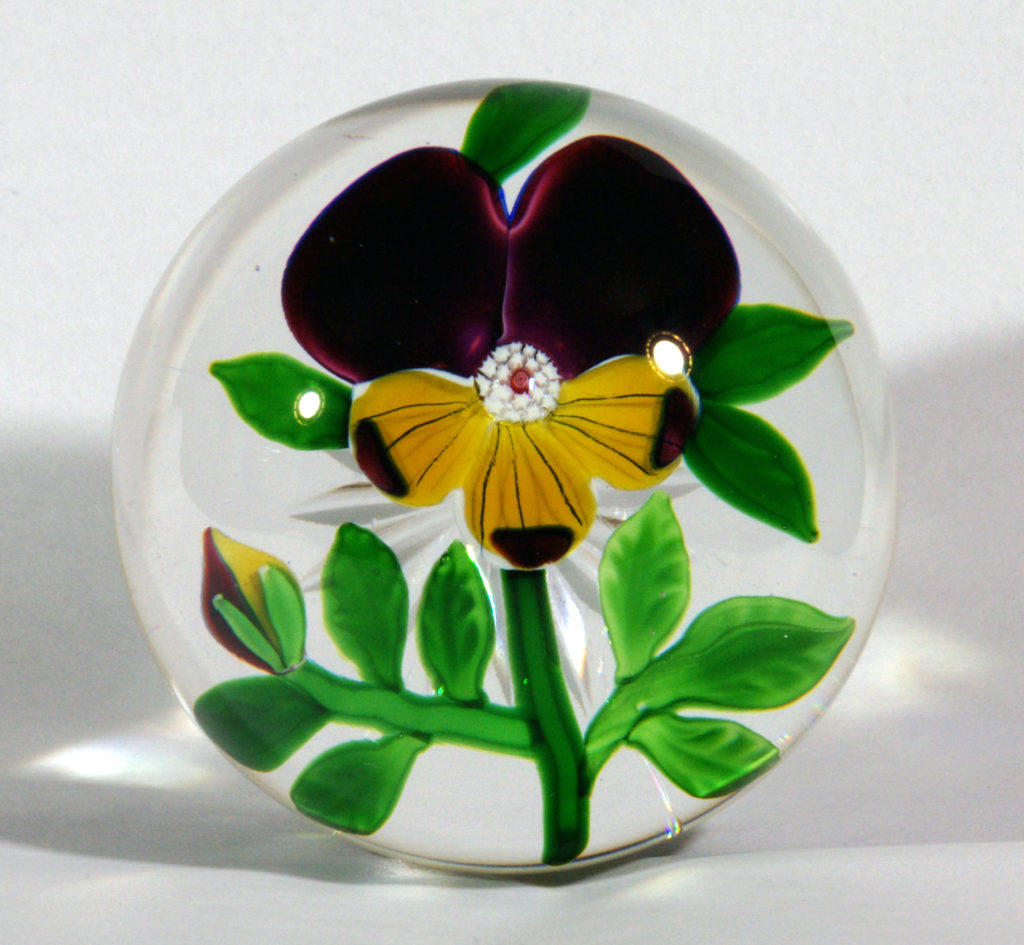
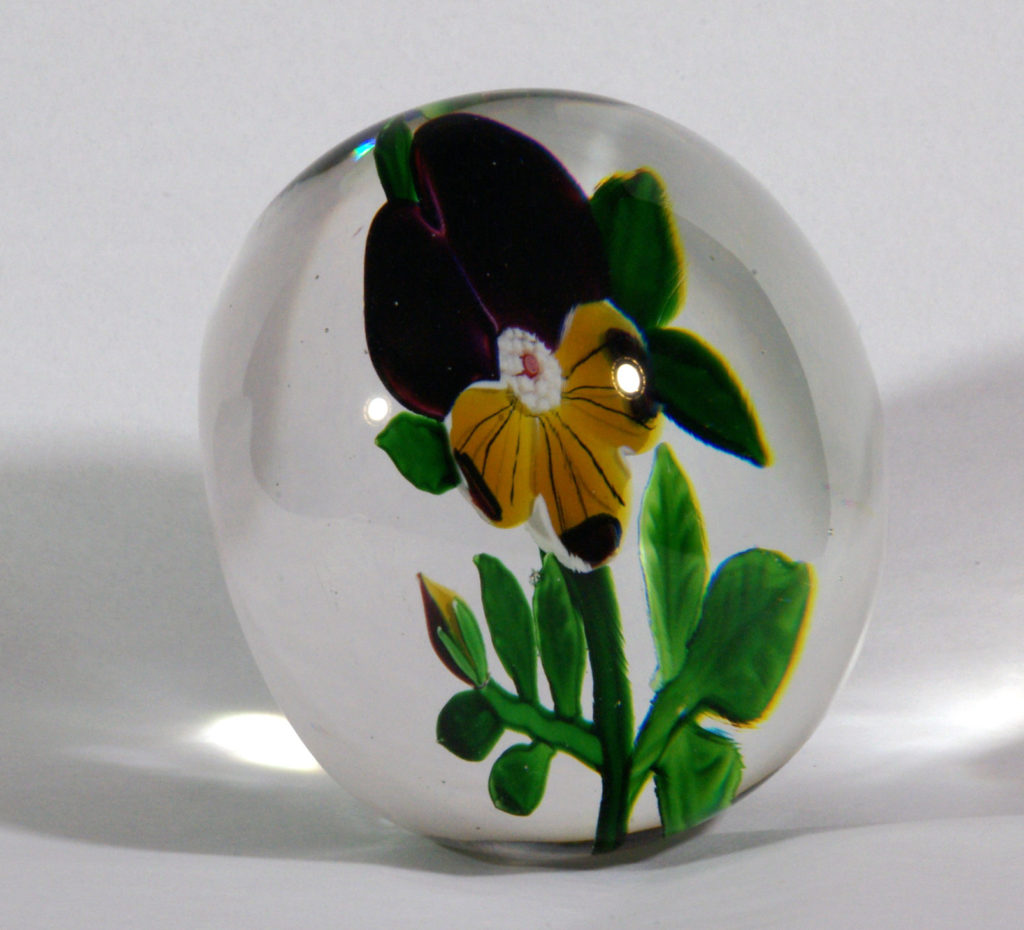
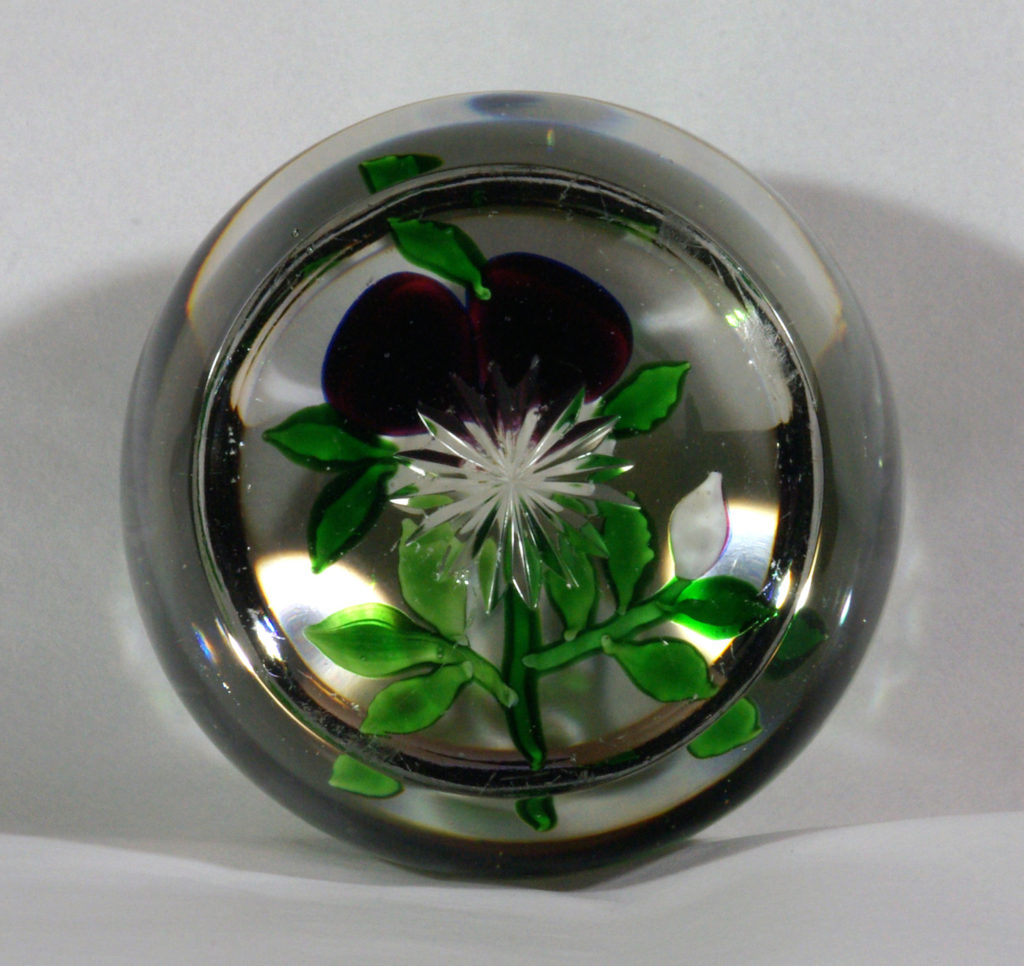
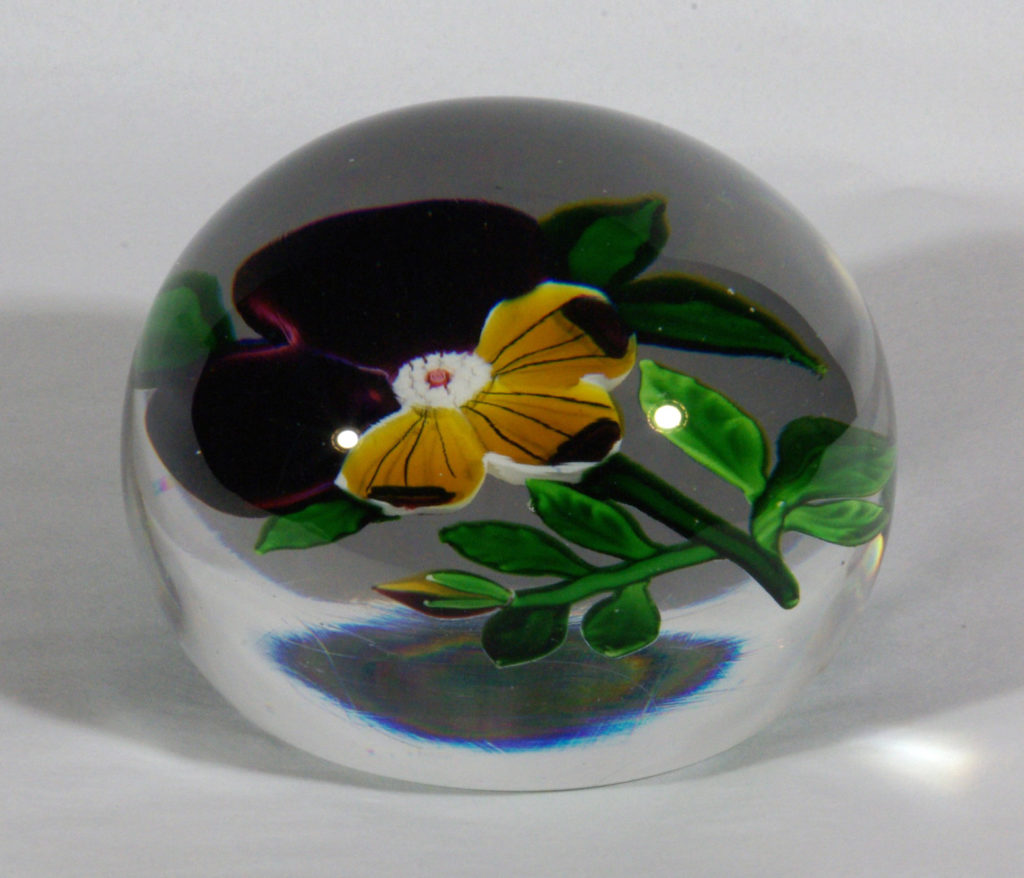
PW888. Antique Baccarat Pansy and bud, circa 1850. Type 3. An excellent example. Beautiful colors and execution. Star cut base. This is a rarely beautiful pansy even for Baccarat – one of the finest examples I have seen in person. The surface of the dome is perfect – some wear on the base. 2 7/8 inch diameter; 2 1/16 inches tall; one pound and three ounces. $950
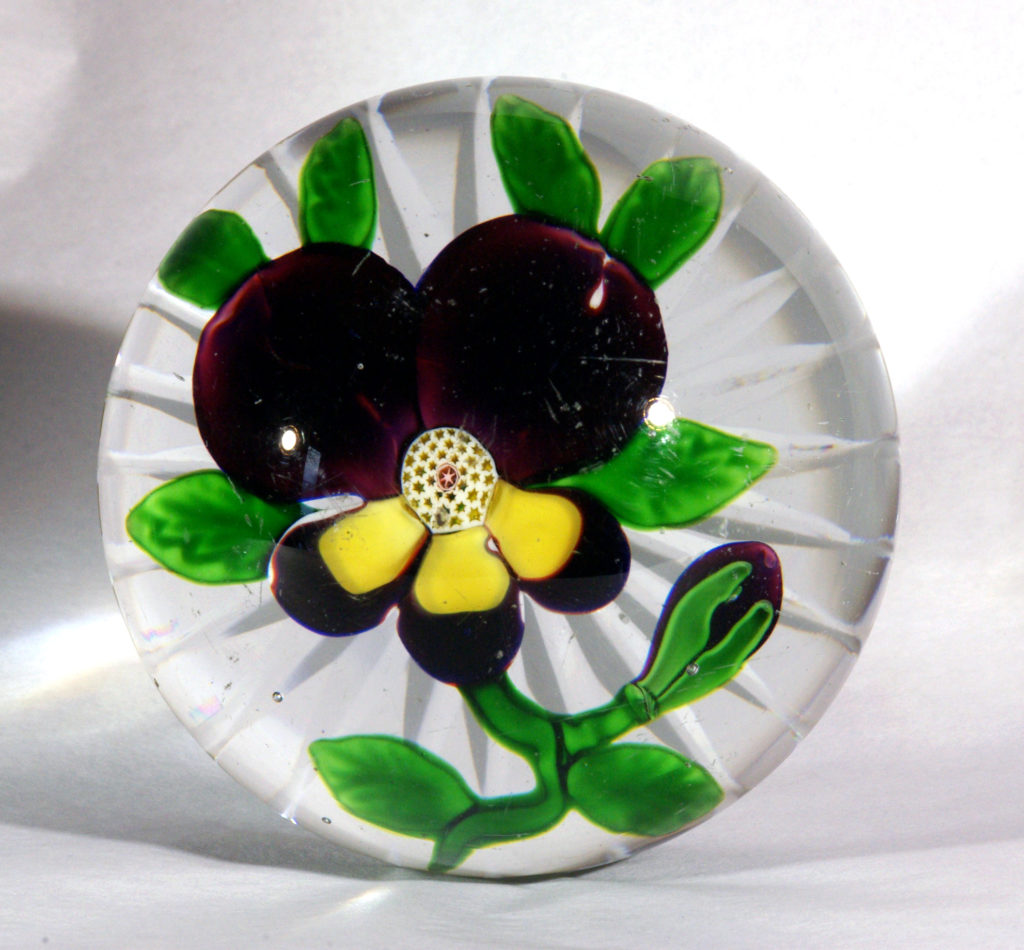

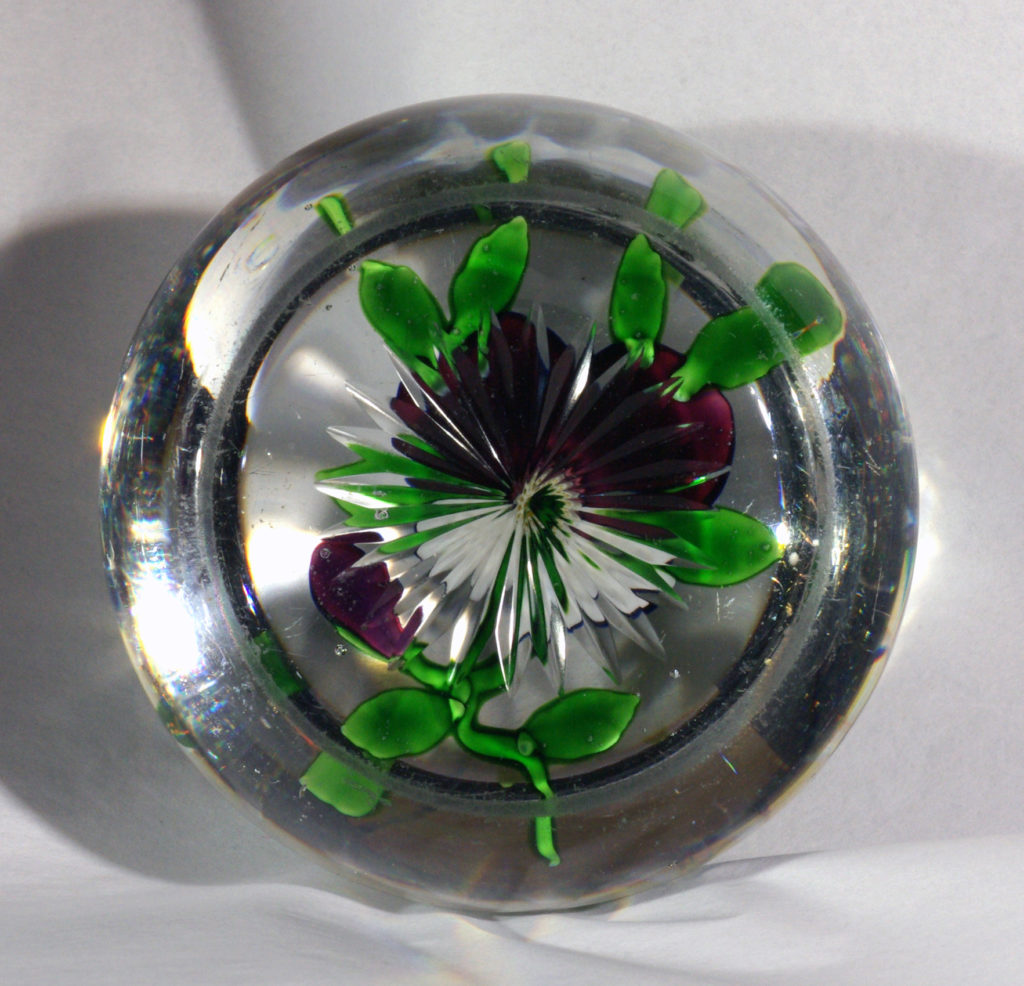
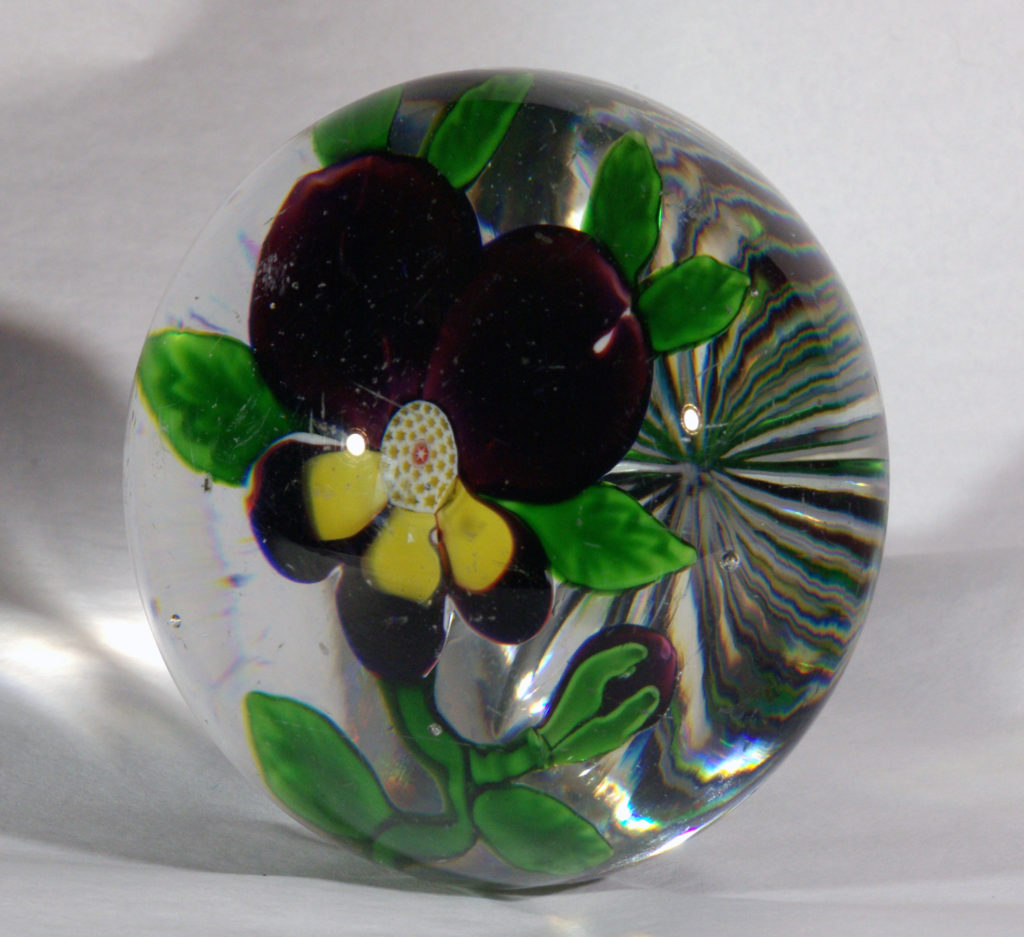
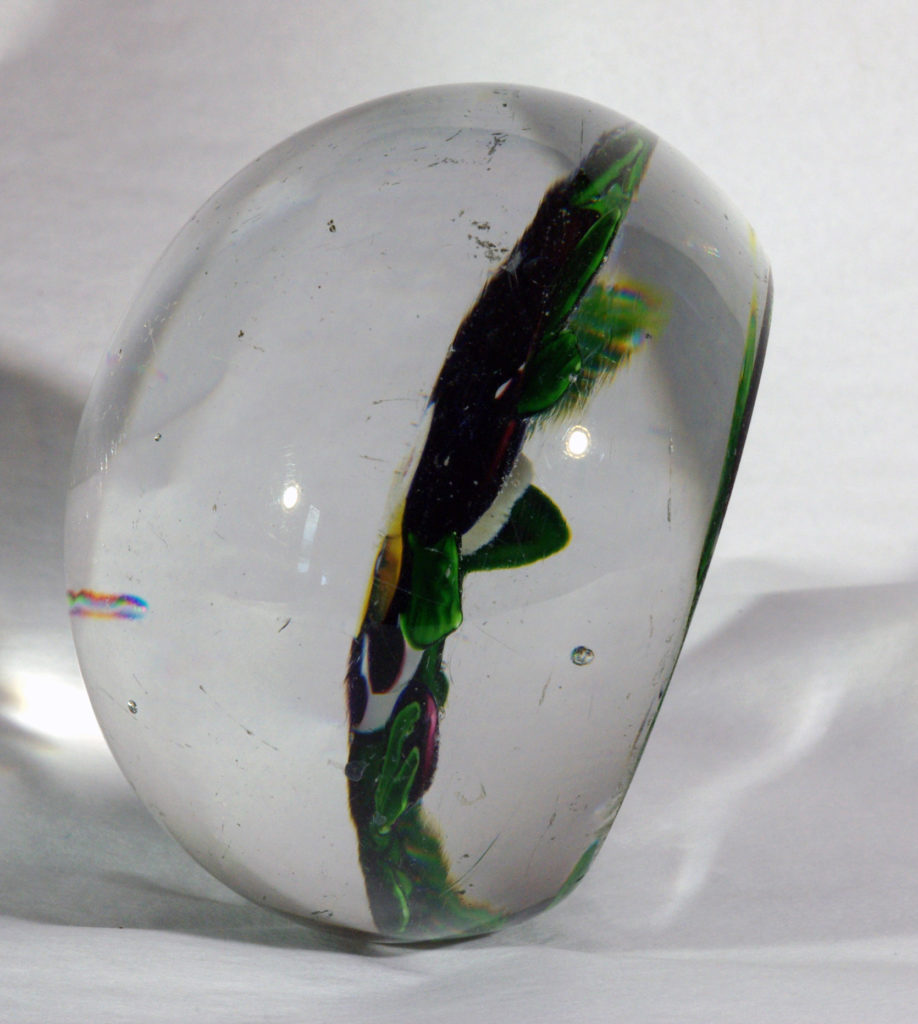
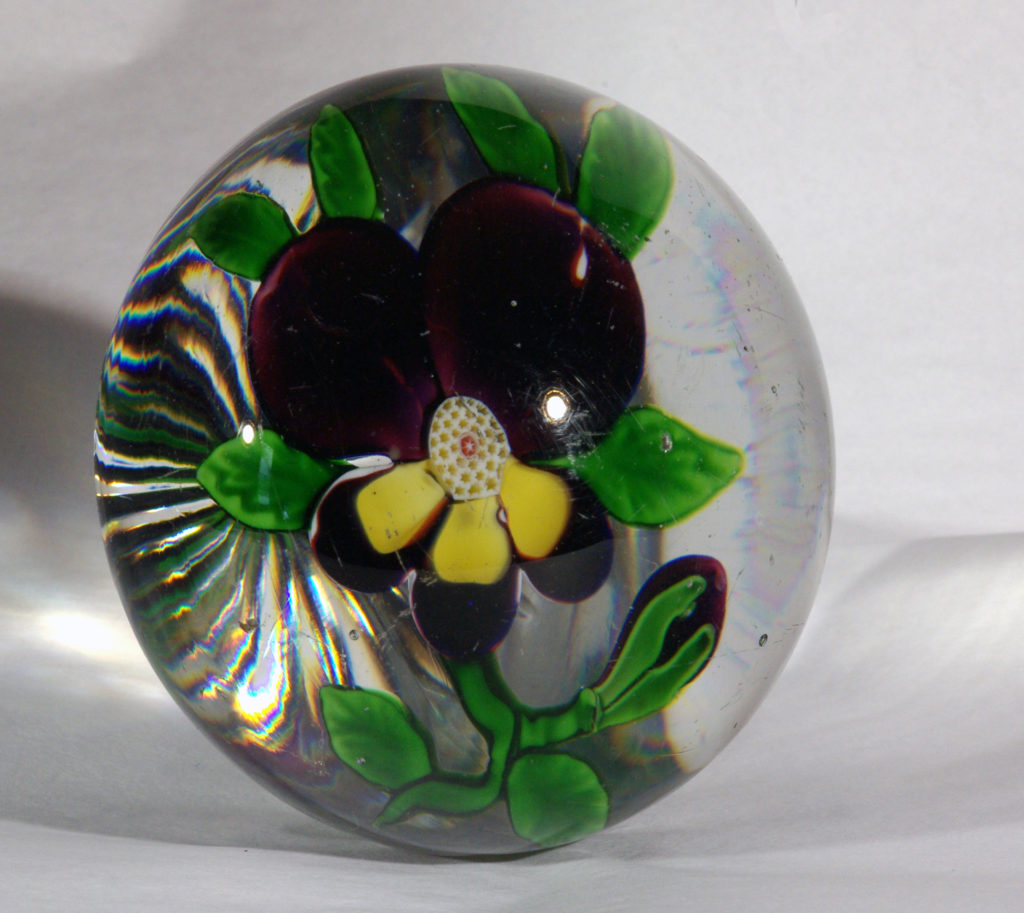
PW2145. Antique Baccarat Pansy and bud, circa 1850. Rare Type 2. These are far harder to find, especially in original, unrestored condition like this one. A nice example of this rare type. Condition is excellent/original – it has light to medium scratches, small nibbles, and a difficult-to-see faint bruise at about the level of the flower, below the curve on the side. 2 15/16 inch diameter; 2 1/16 inches tall; one pound and three ounces. $1100
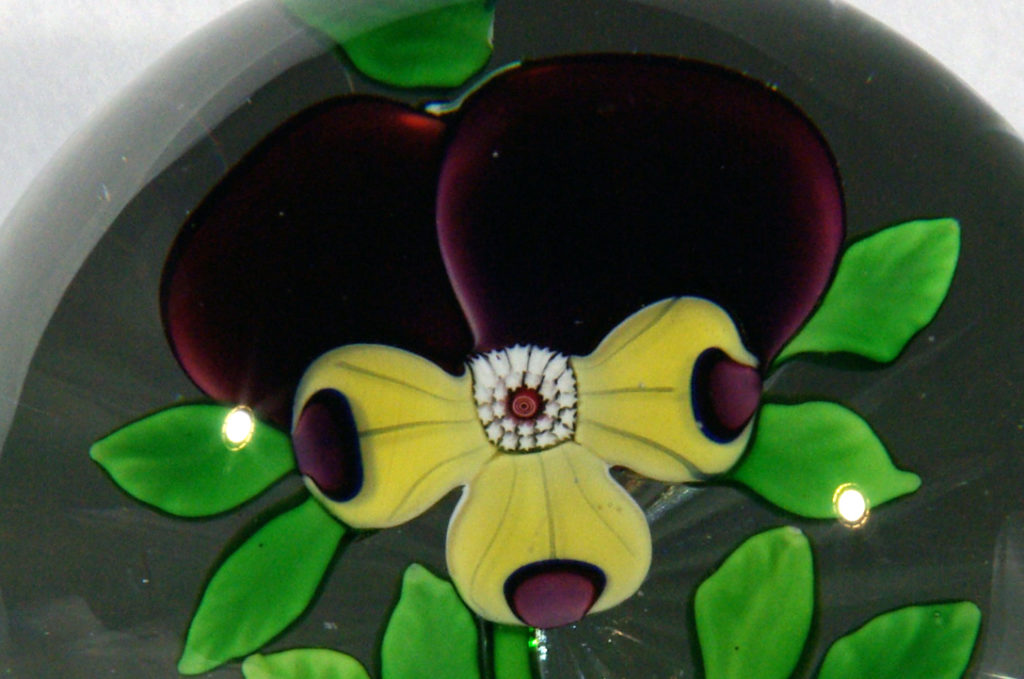

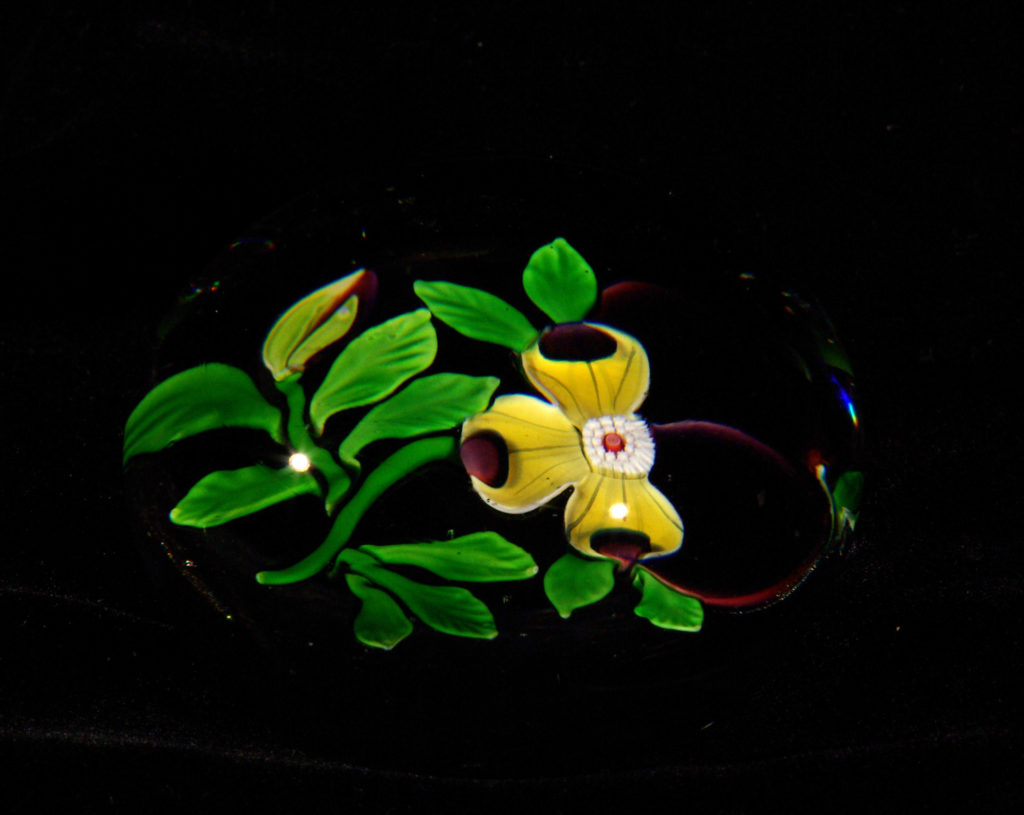
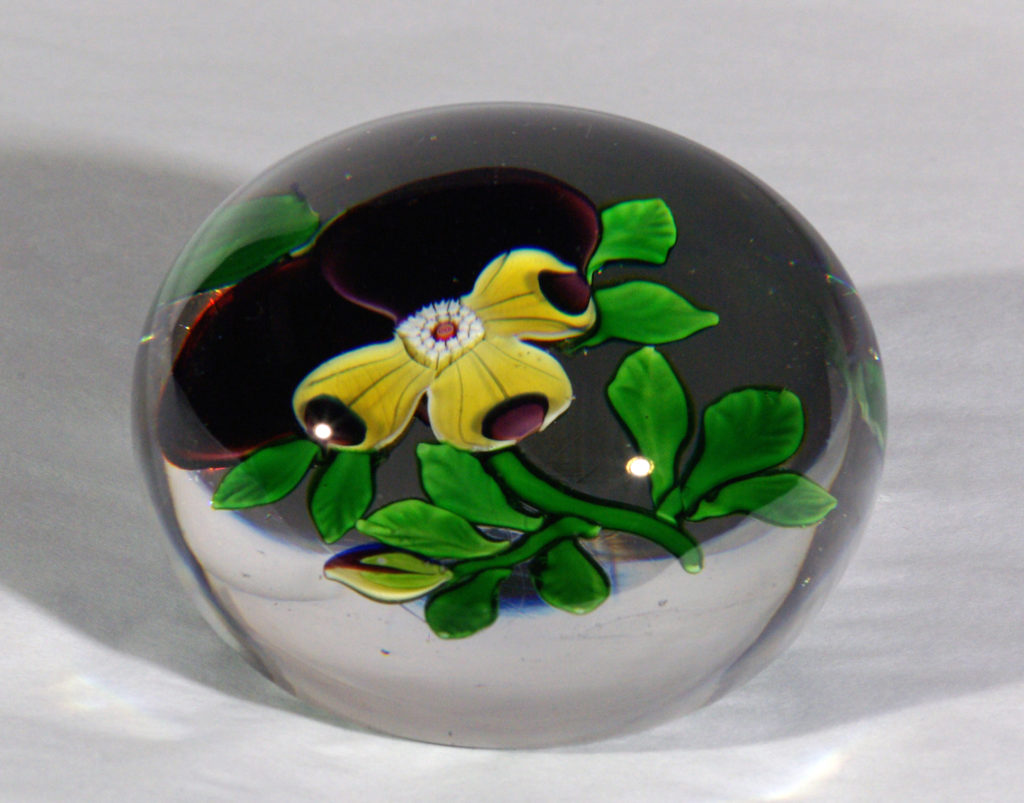
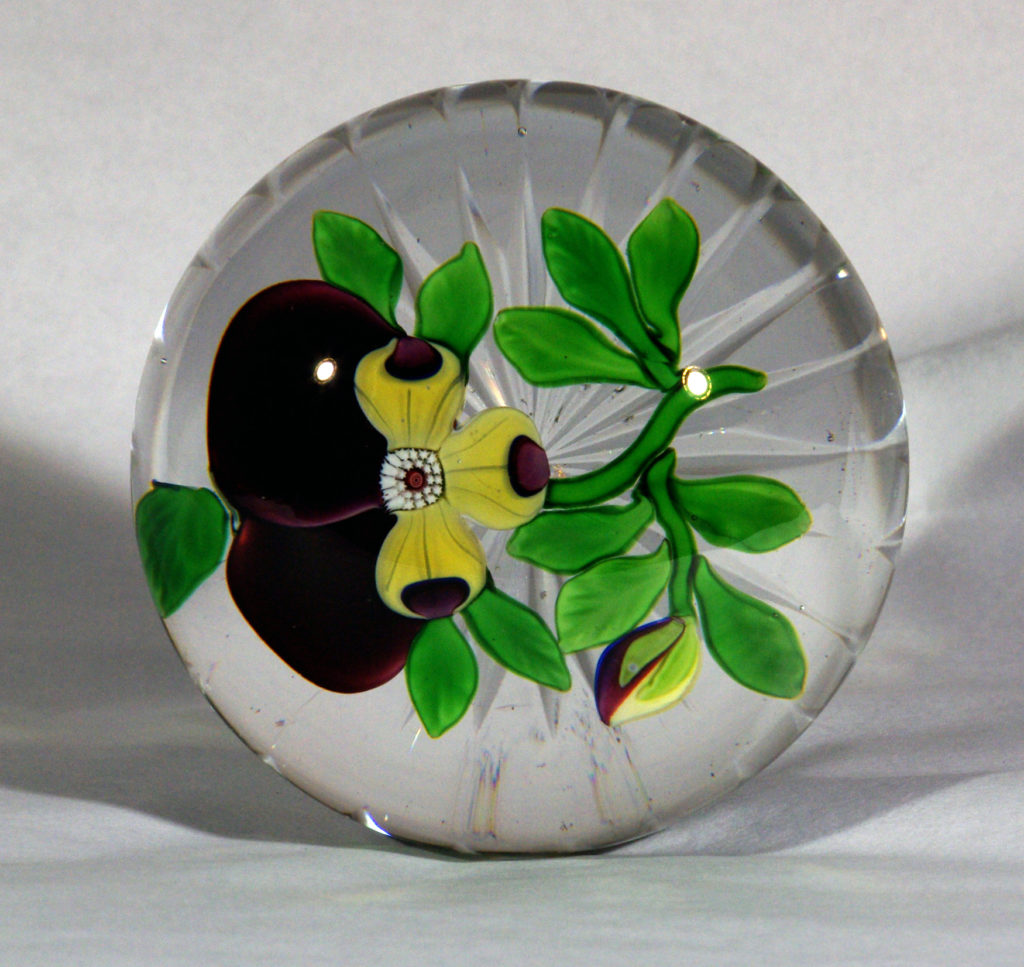
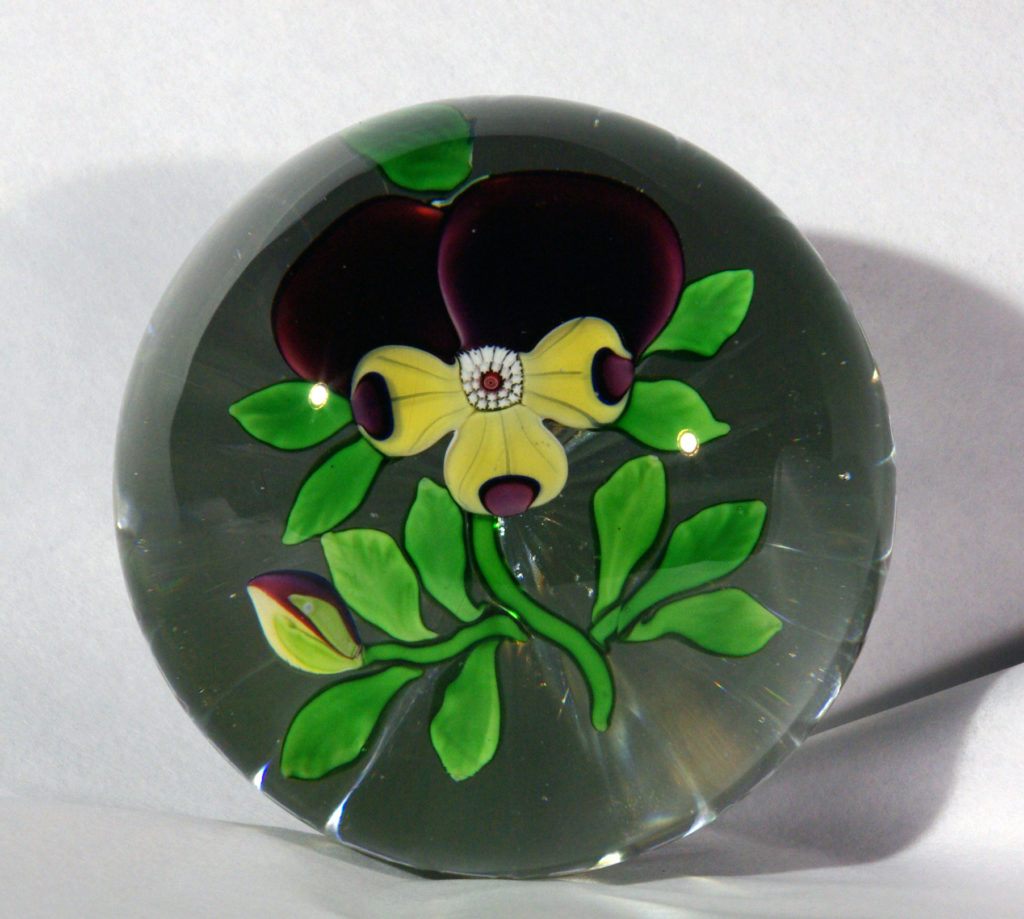
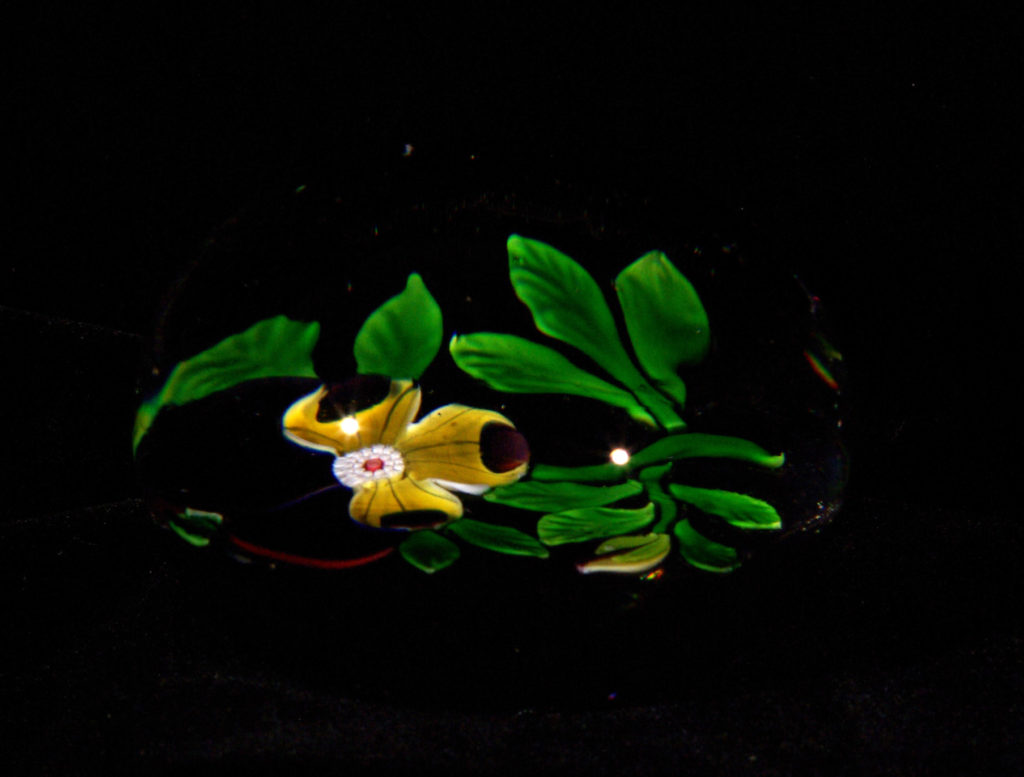
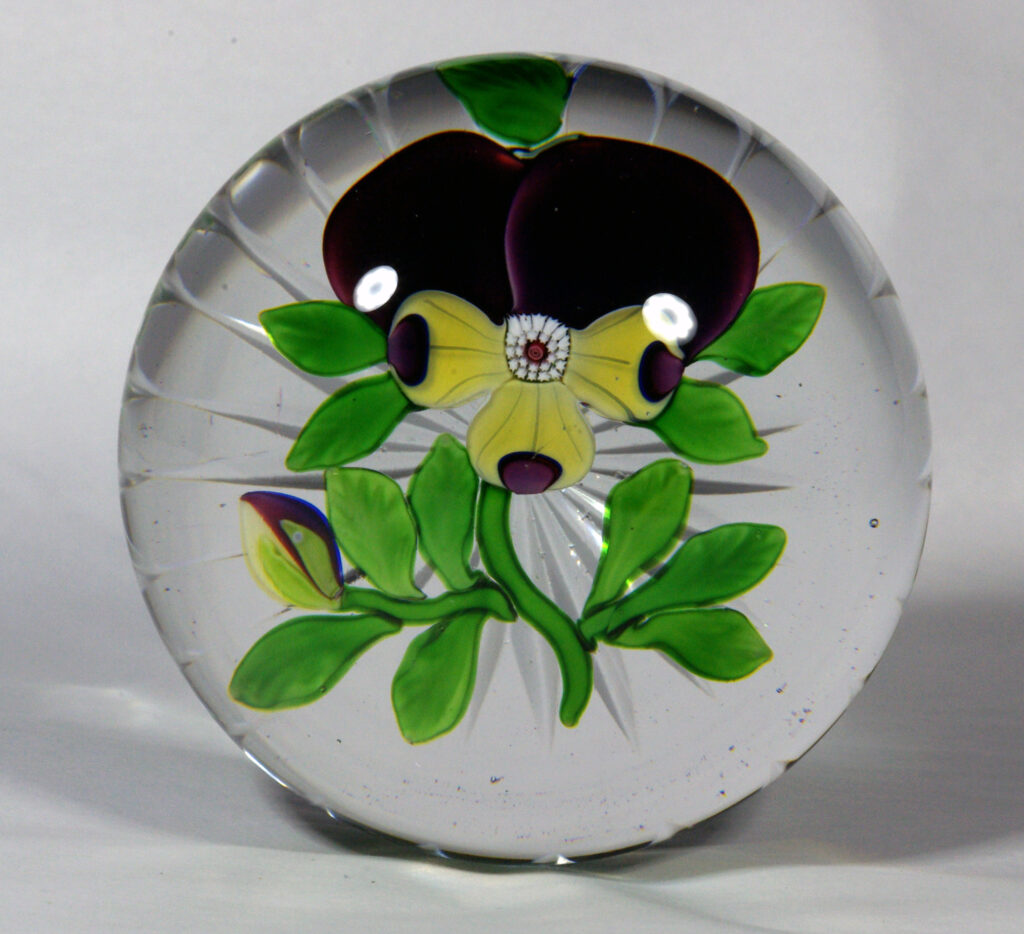
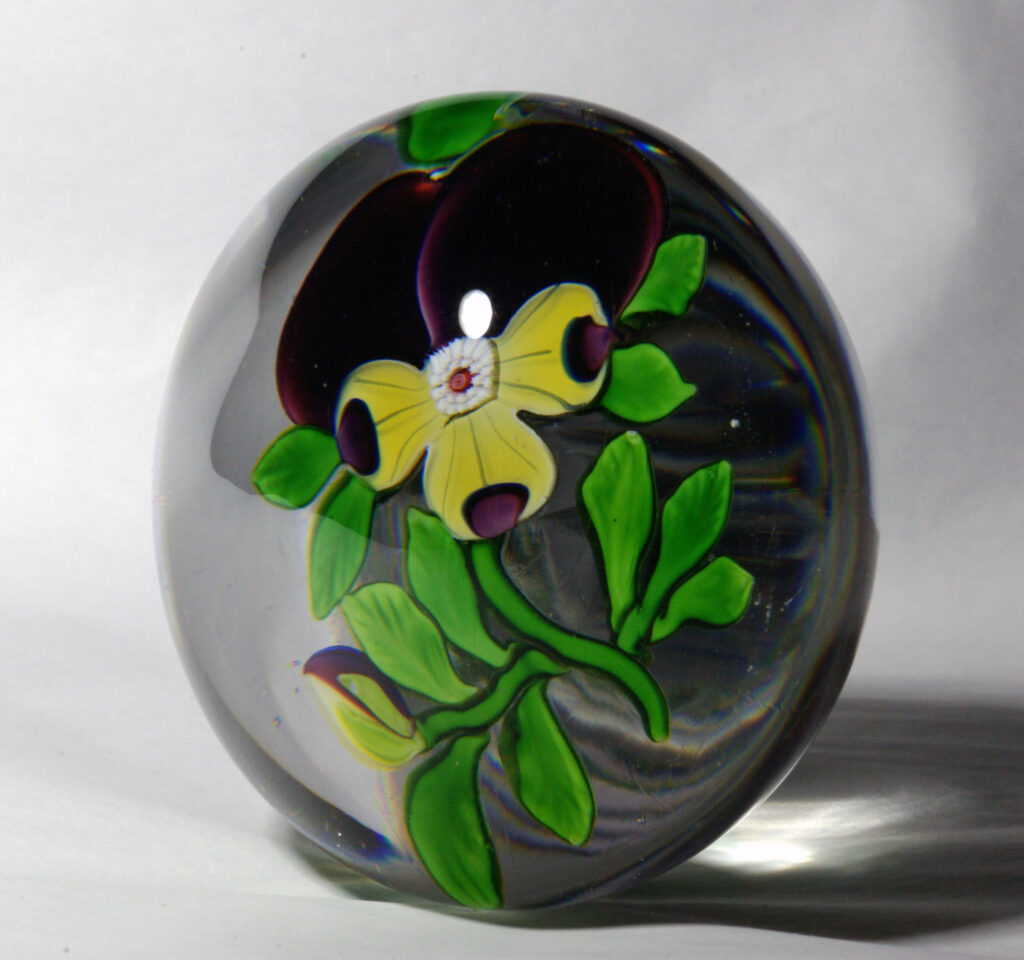
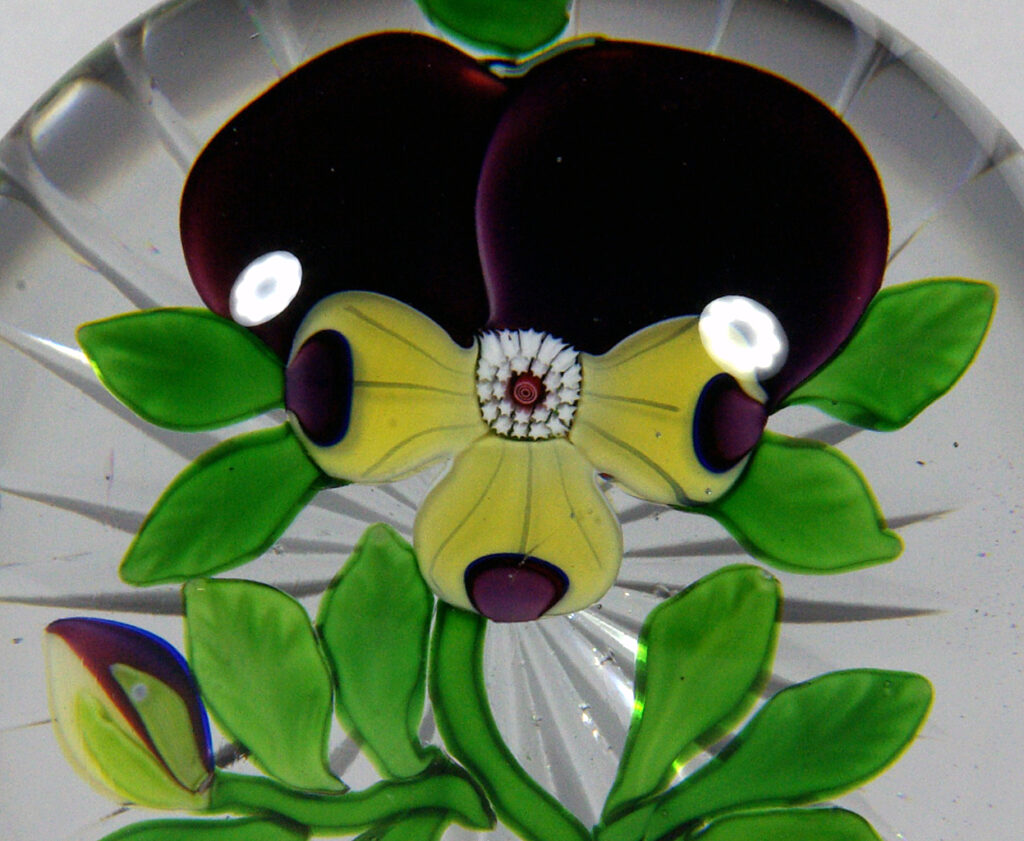
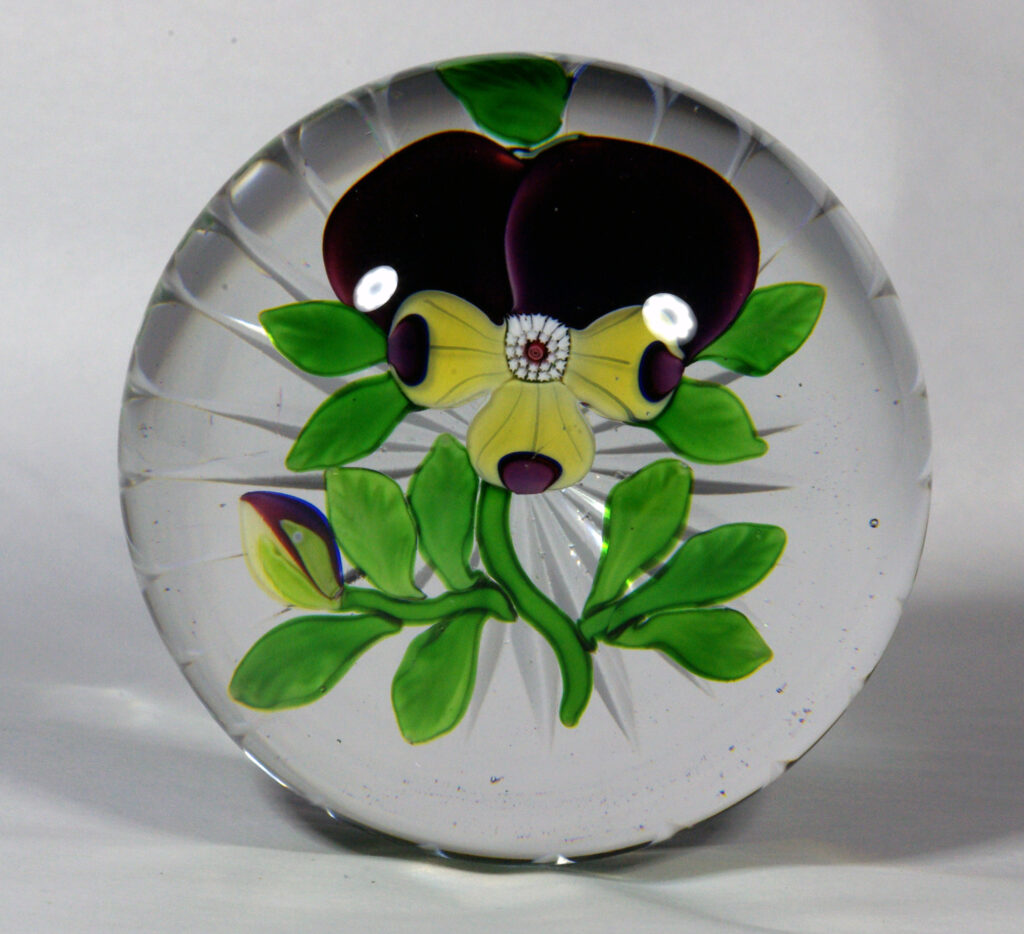
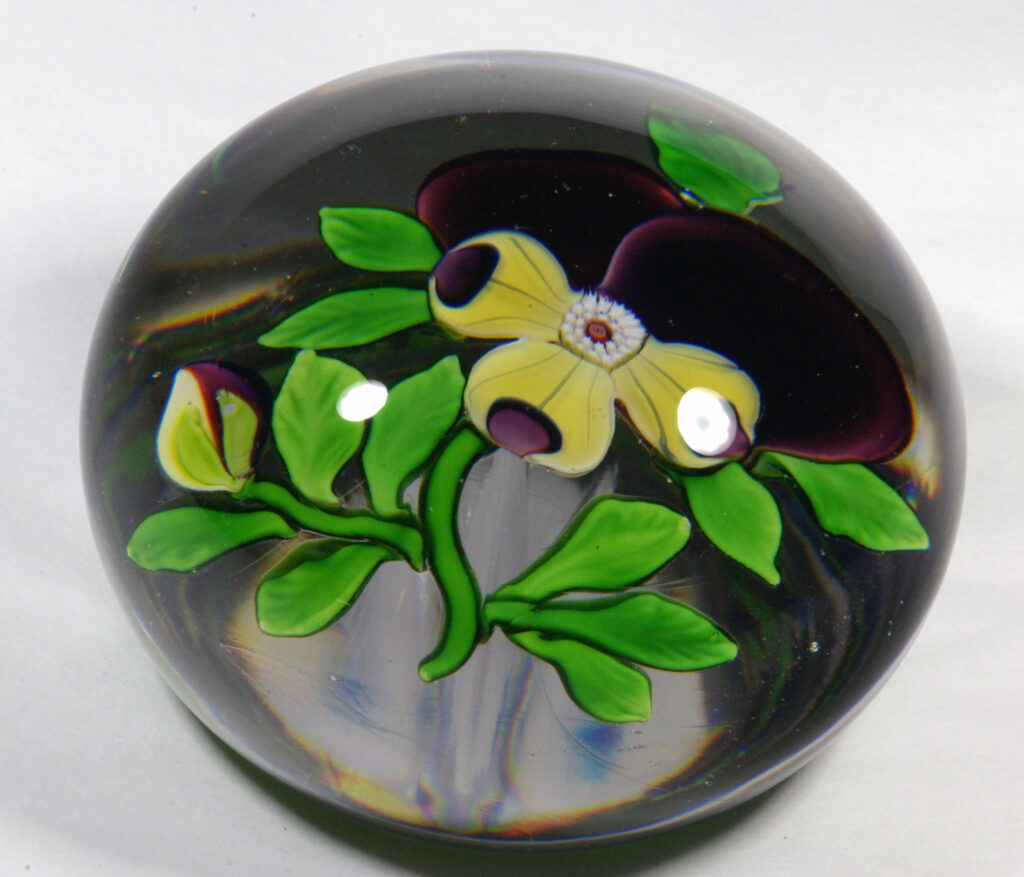
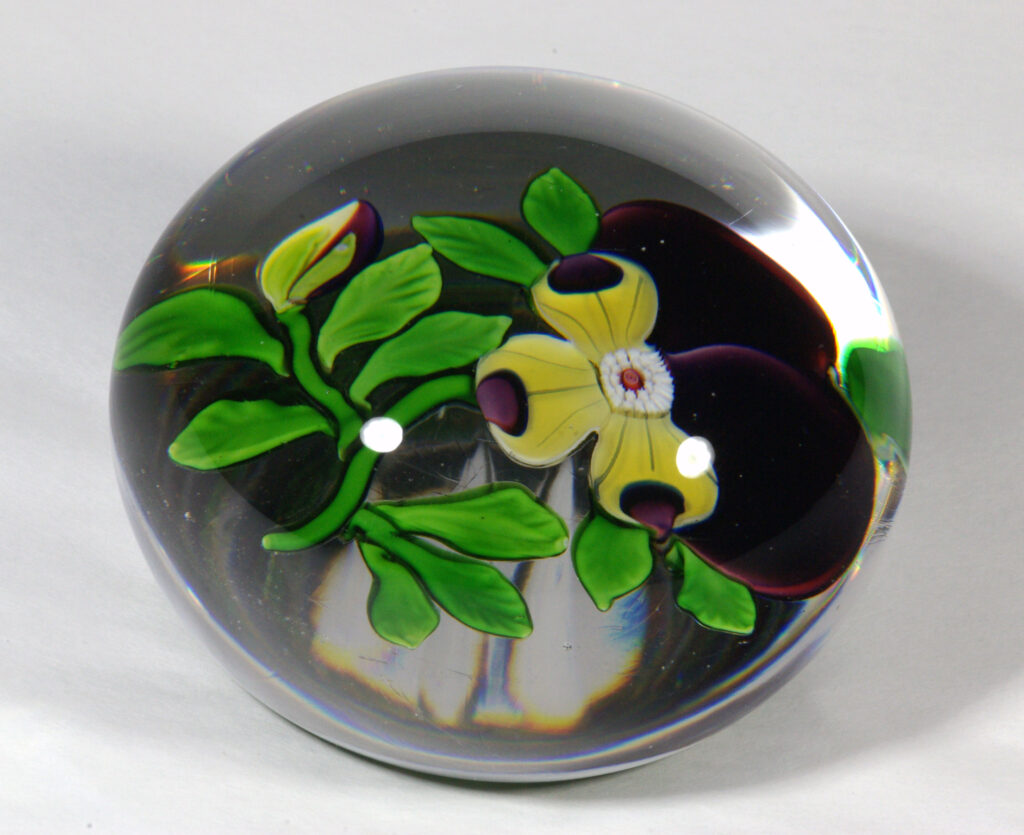
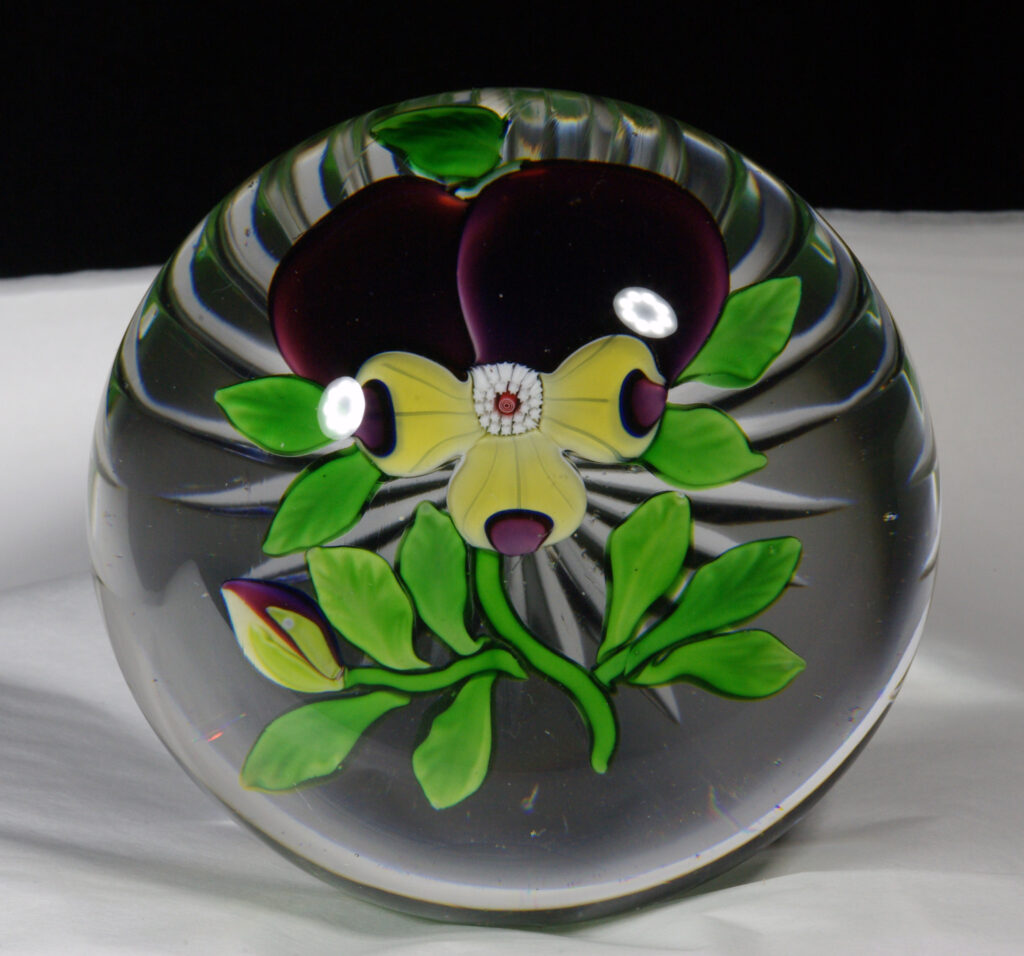
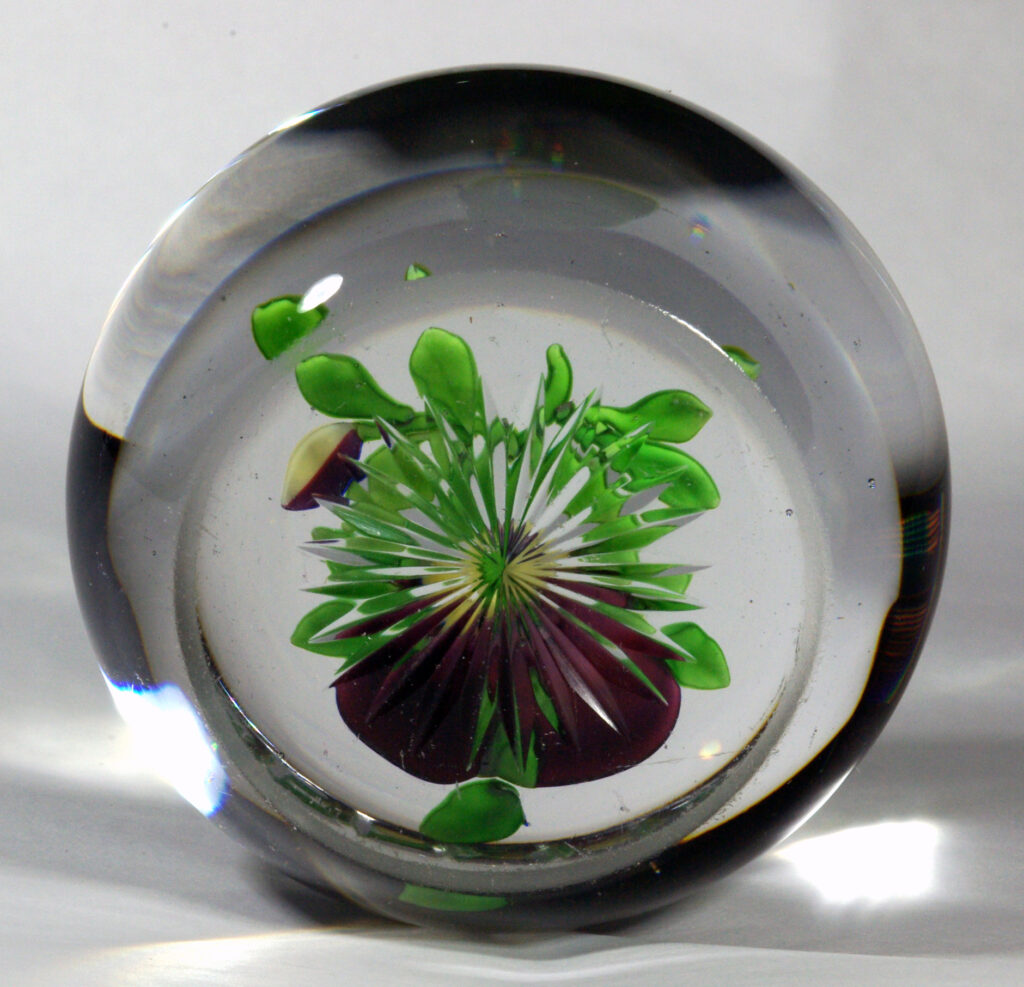
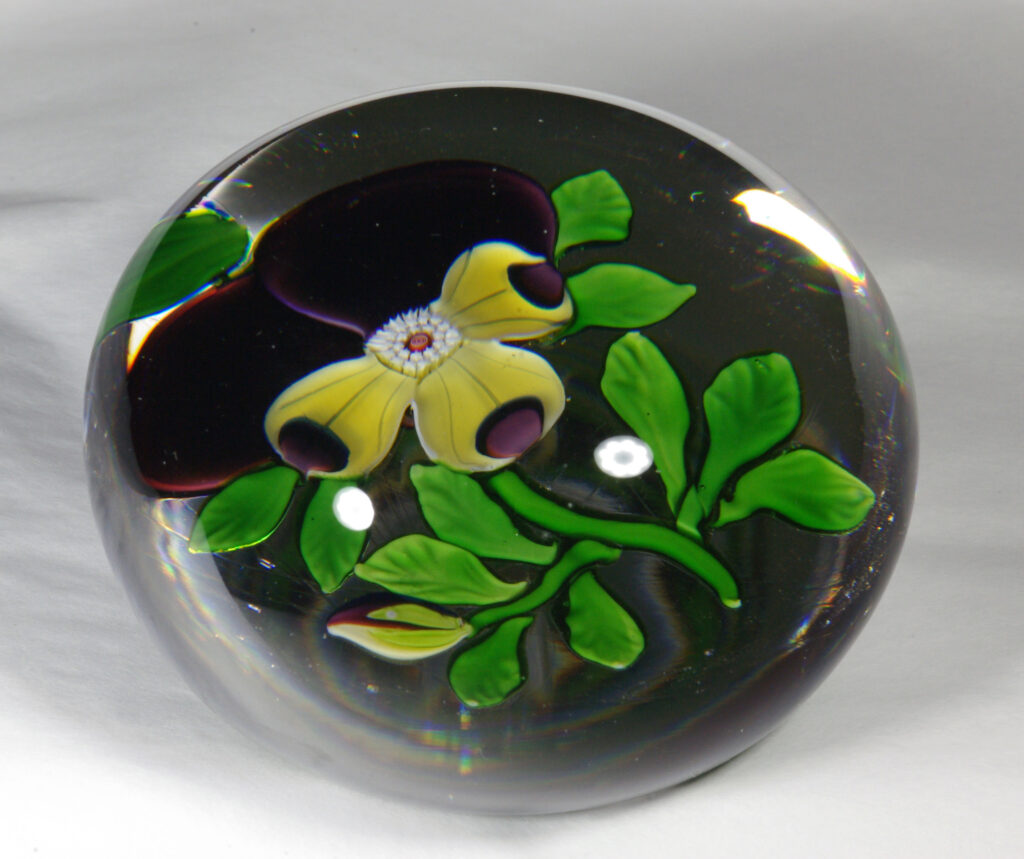
PW2673. Antique Baccarat Pansy and bud, circa 1850. Type 3. An excellent example. Beautiful colors and execution. Star cut base. Condition is excellent. 2 13/16 inch diameter; 1 15/16 inches tall; one pound and one ounce. $850
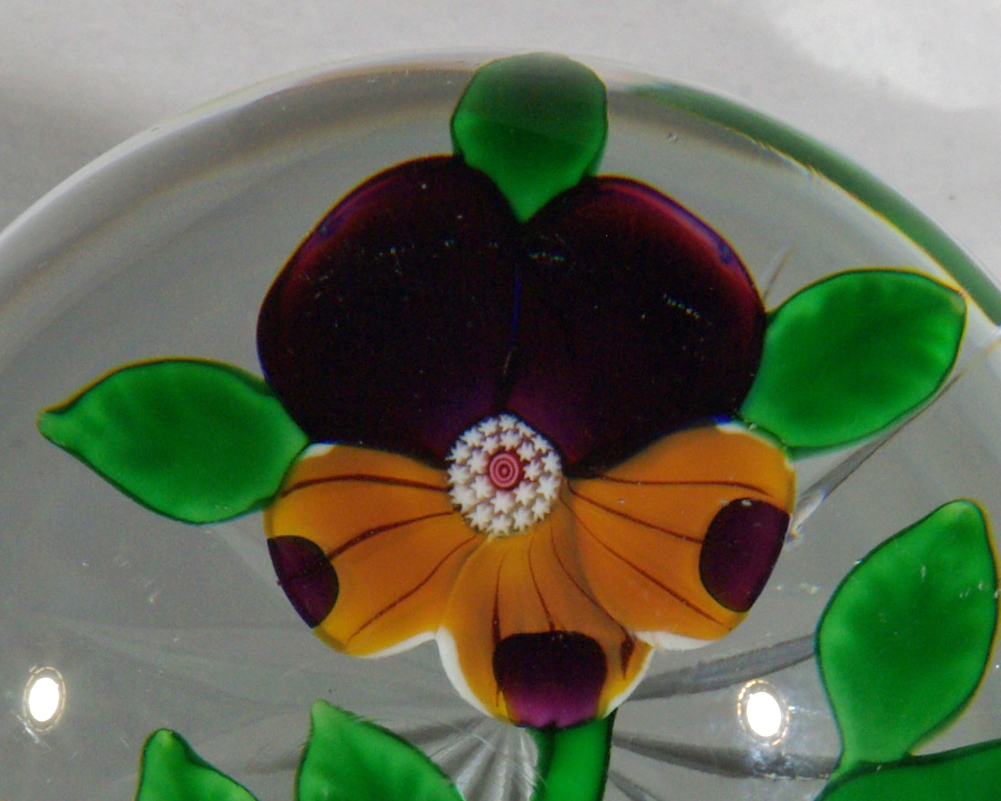
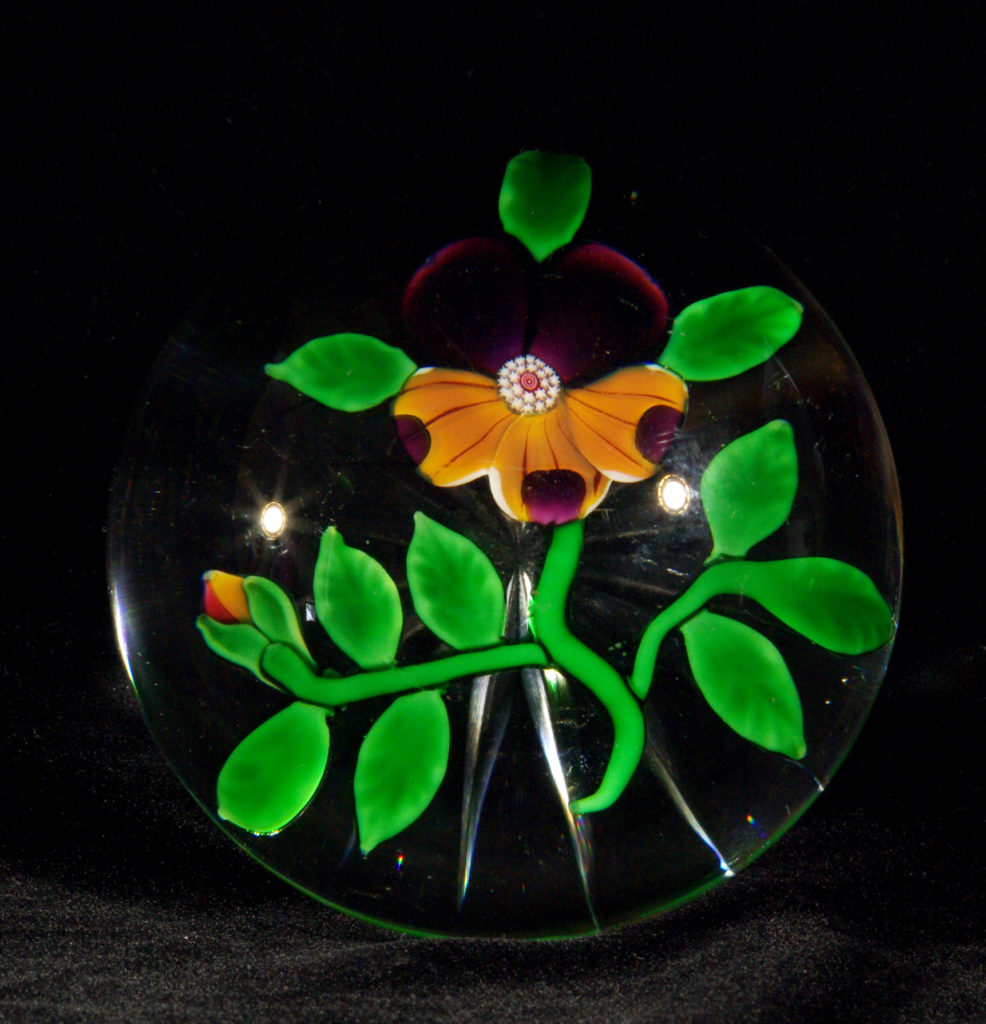

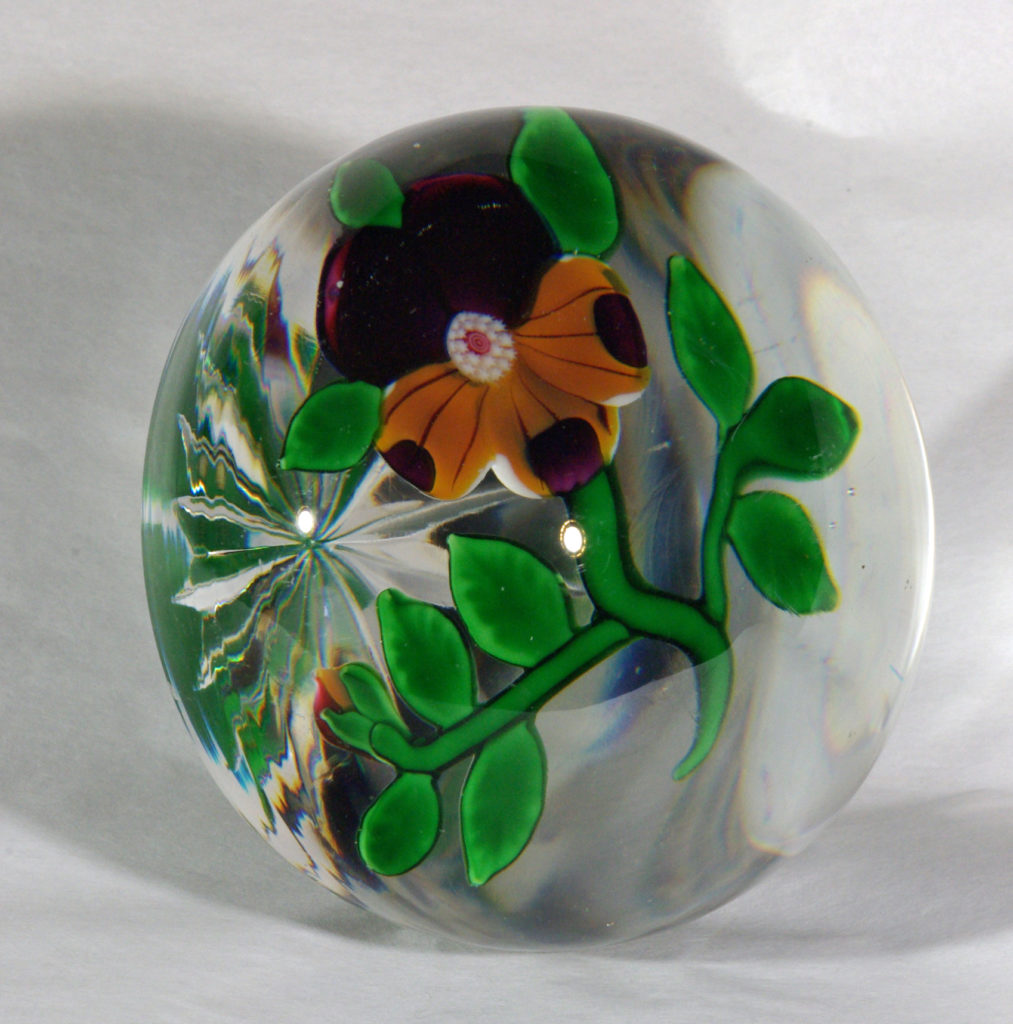
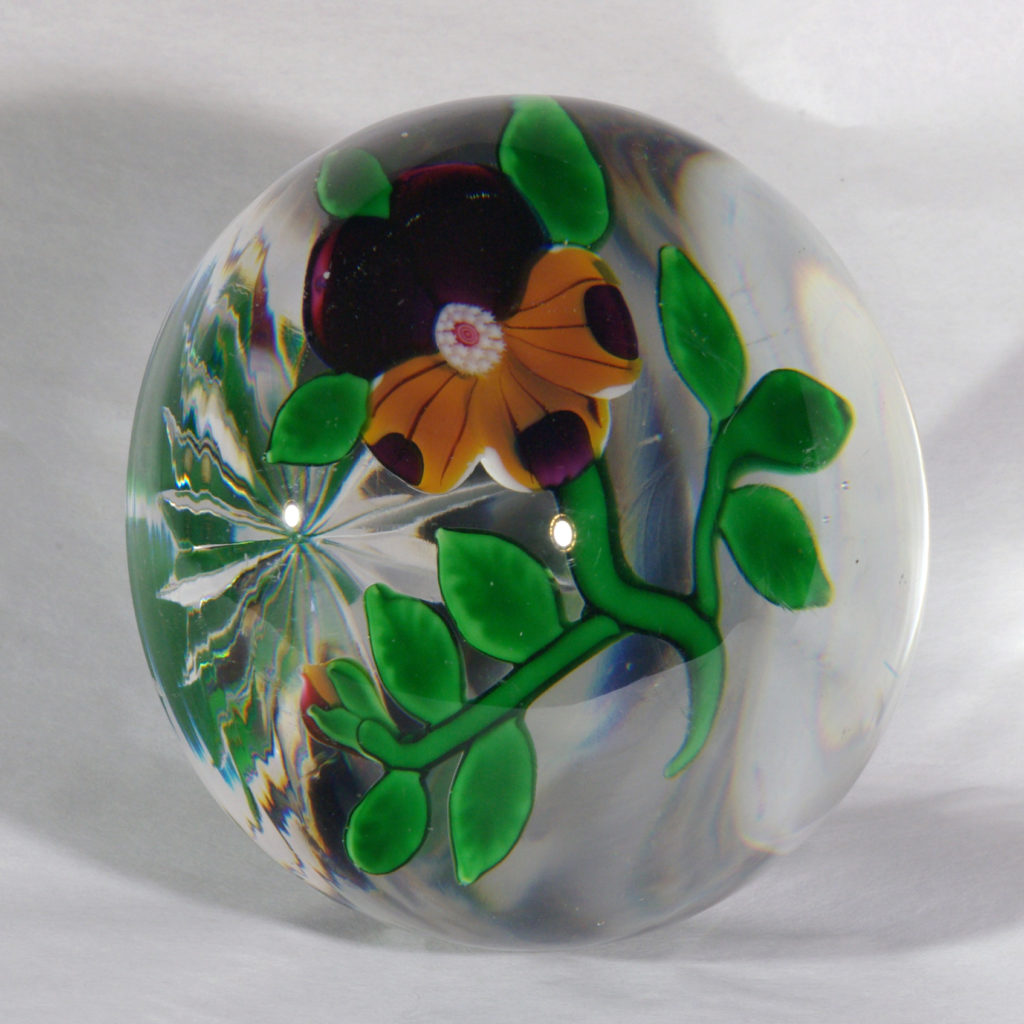

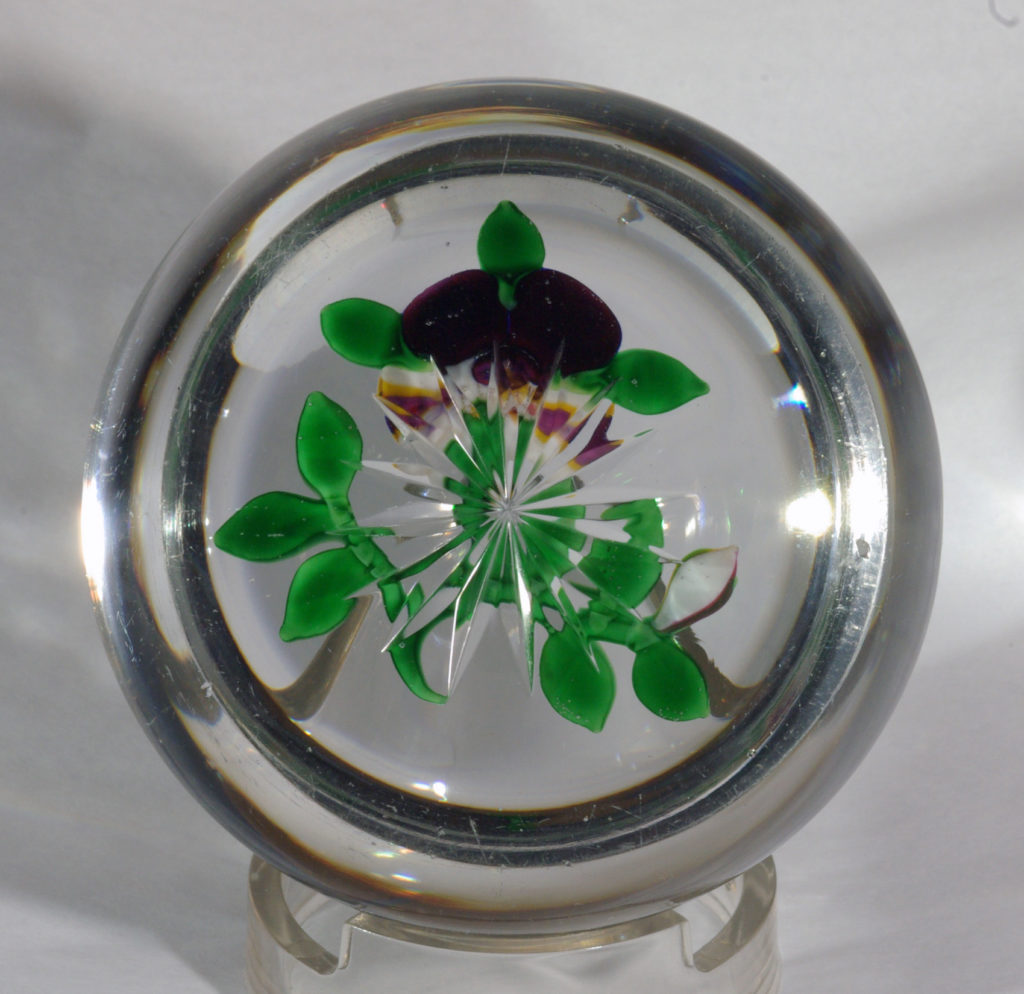
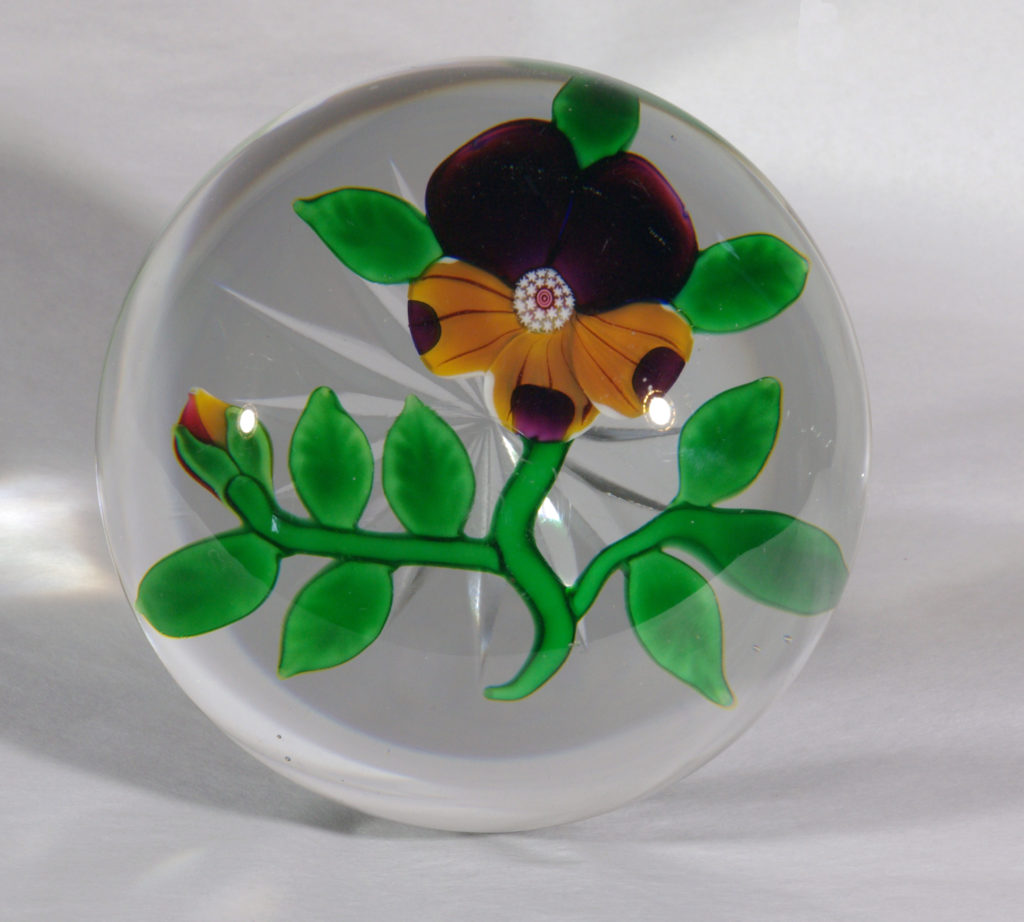
PW1319. Baccarat Antique Museum Piece Pansy. Type 3. The flower and bud are well made and nicely composed with a translucent butterscotch color for the yellow petals. Star cut concave base. This weight is in excellent original condition with a few light scratches and minimal shelf wear. Because of the high quality of this weight, I suspect it is from the late 1800s or early 1900s, before Mr. Idoux began his work. 3 1/16 inch diameter; 2 1/16 inches tall; one pound. $700
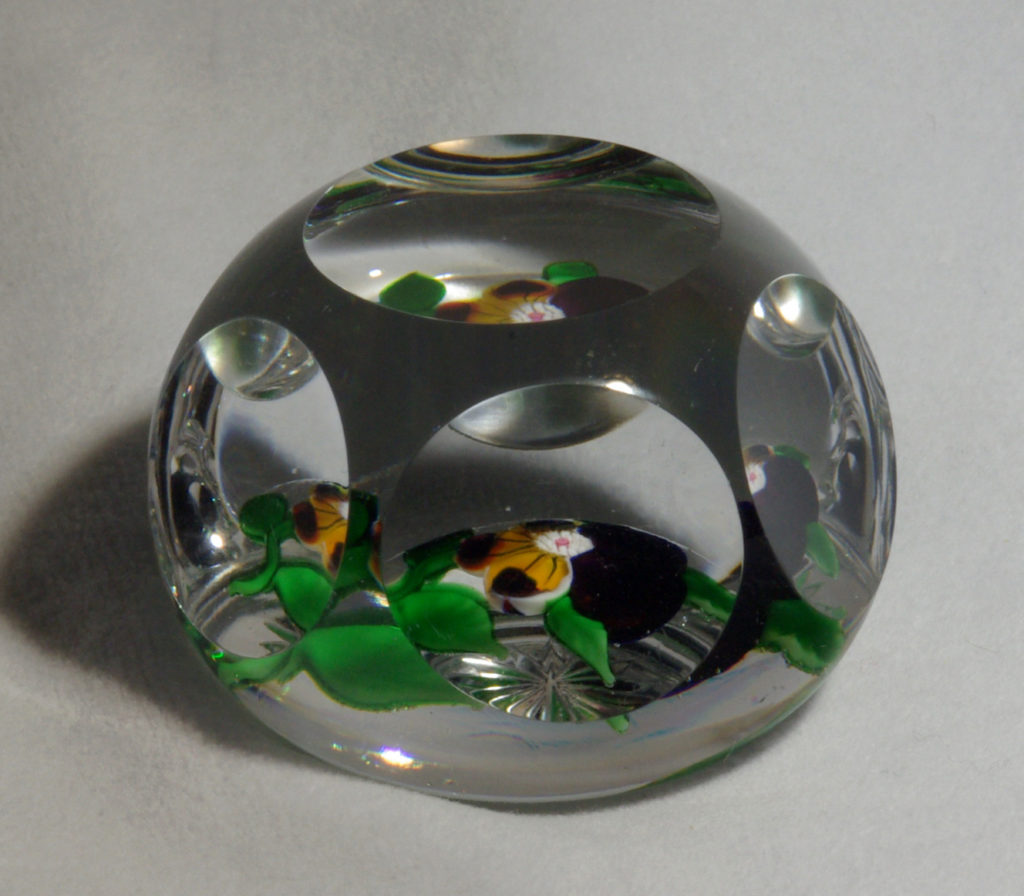
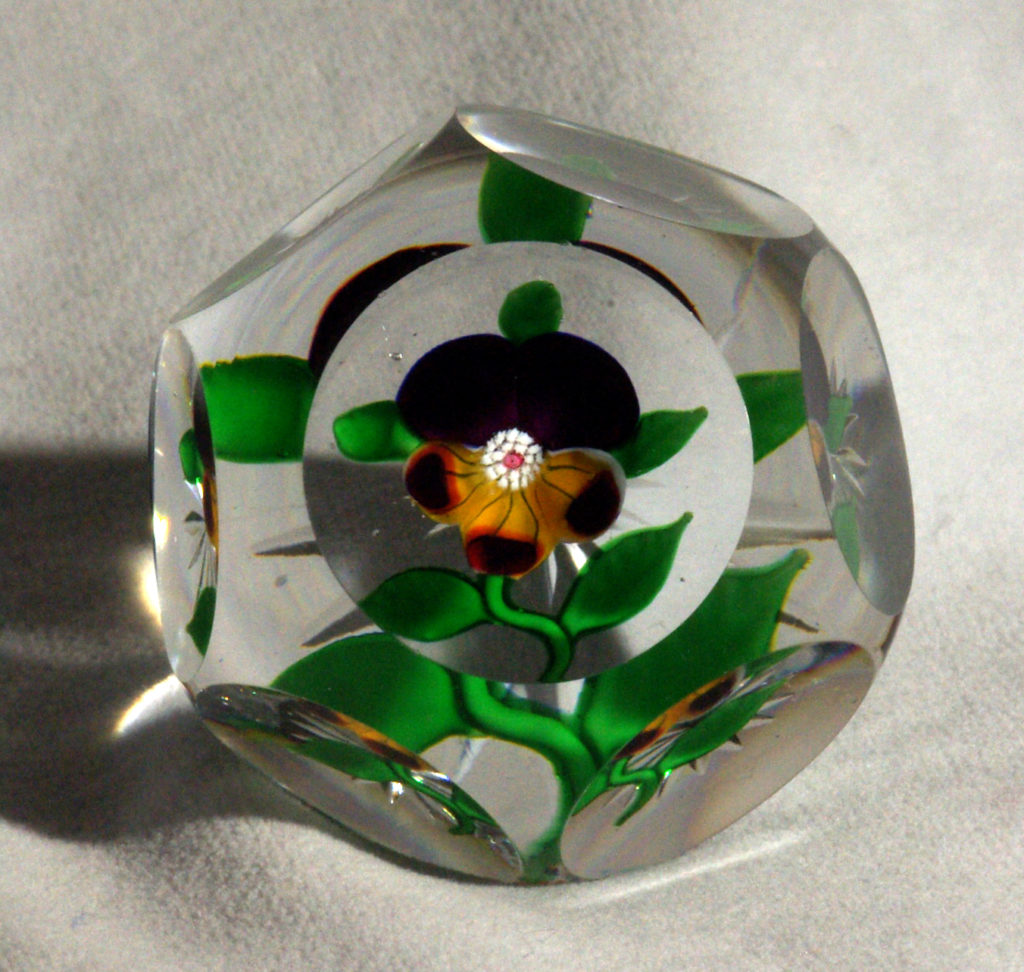
PW2383. Antique Baccarat Faceted Pansy. Type 3. This is a perfect little gem of a faceted pansy weight. Star-cut base. Condition is perfect. 2 1/8 inch diameter; 1 7/16 inches tall; seven ounces. $275 SOLD
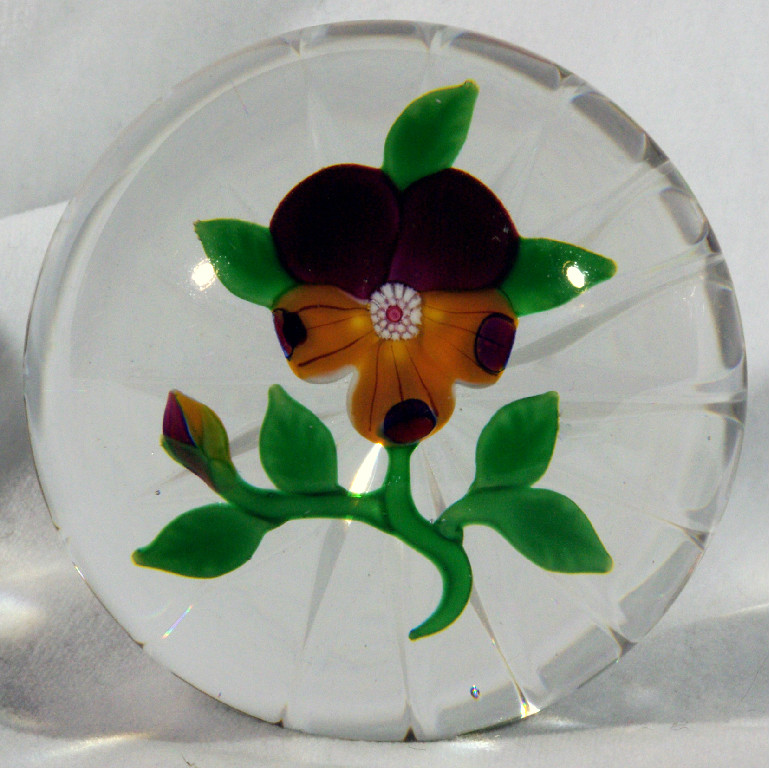
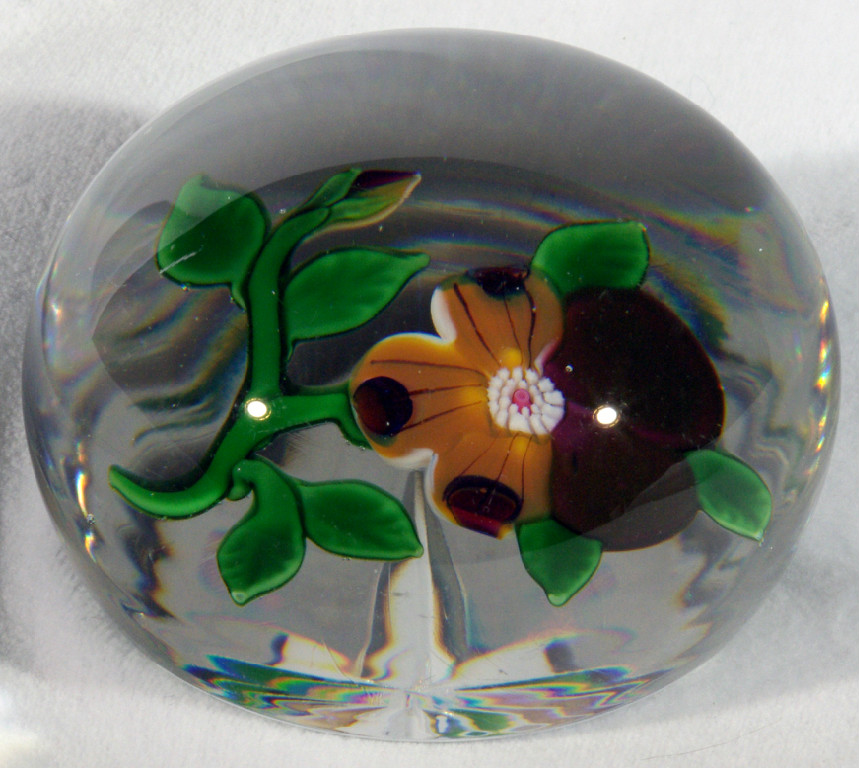
PW1528. Baccarat Antique Museum Piece Pansy. Type 3. The flower and bud are well made and nicely composed. Star cut flat base. This weight is very good original condition. If you inspect it carefully you will see signs of use, a few light scratches on the surface, a few tiny flea bites at the base, light shelf wear – however, because it appears to be original condition with minimal issues, it is a more prized collector piece. 2 13/16 inch diameter; 1 13/16 inches tall; one pound. $400
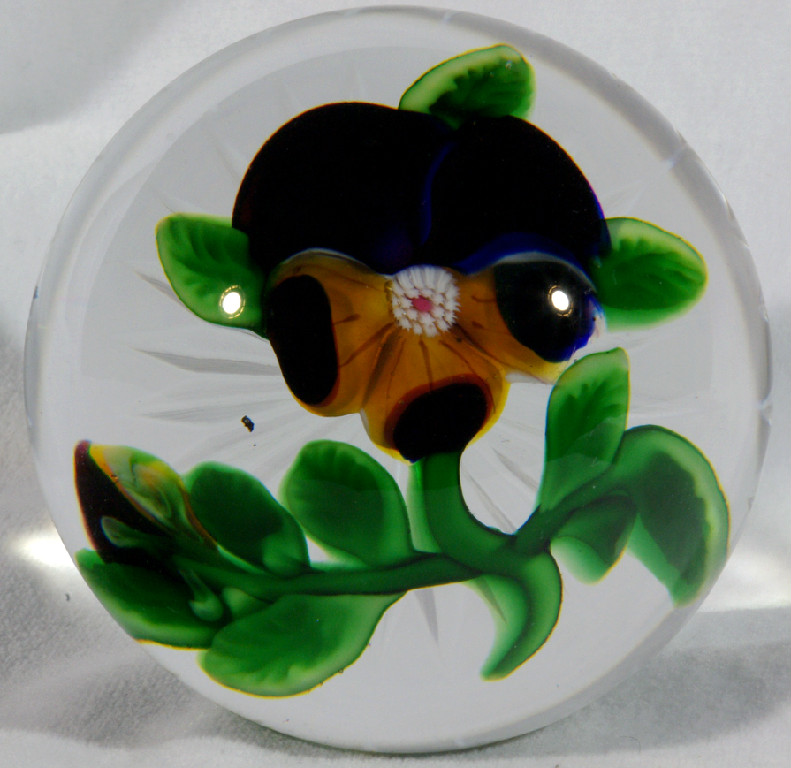
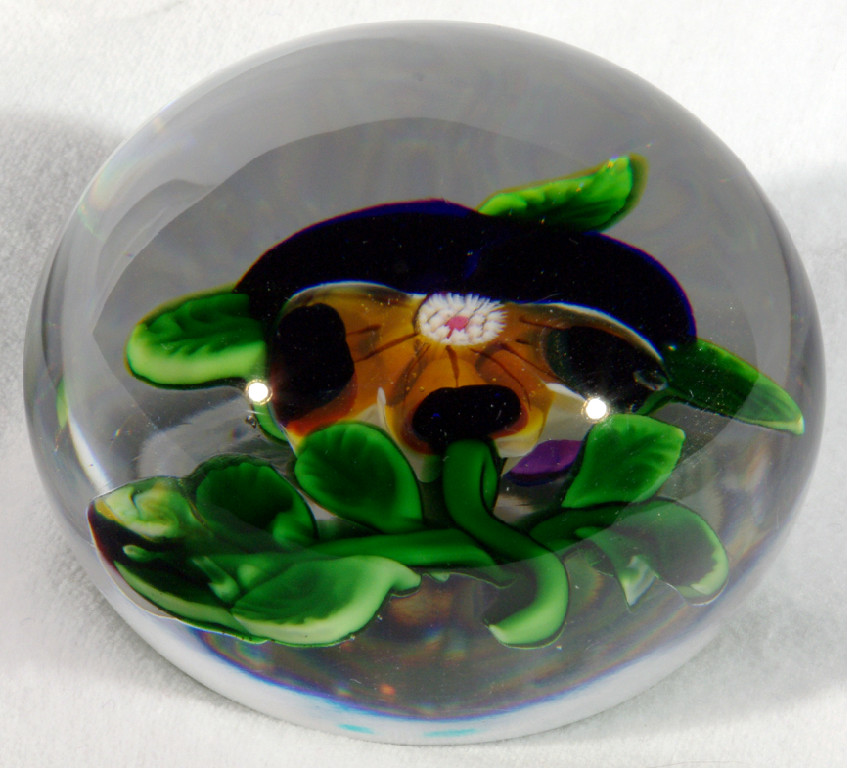
PW1622. Baccarat Antique Museum Piece Pansy. Type 3. The flower and bud are well made and nicely composed. Star cut concave base. It has a big fat flower with thick lamp work. The top petals are deep satiny purple. It has a high dome. Condition is perfect. 2 3/4 inch diameter; 2 inches tall; one pound. $425
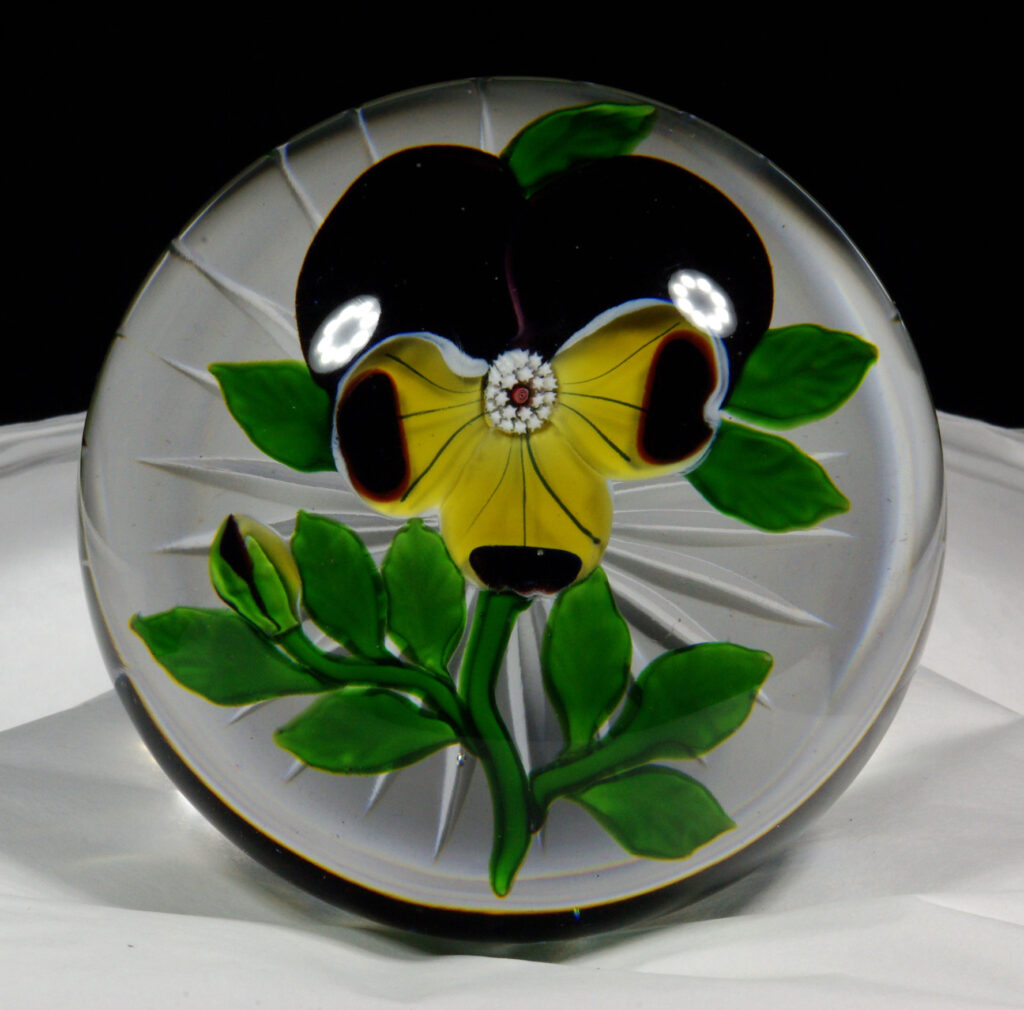
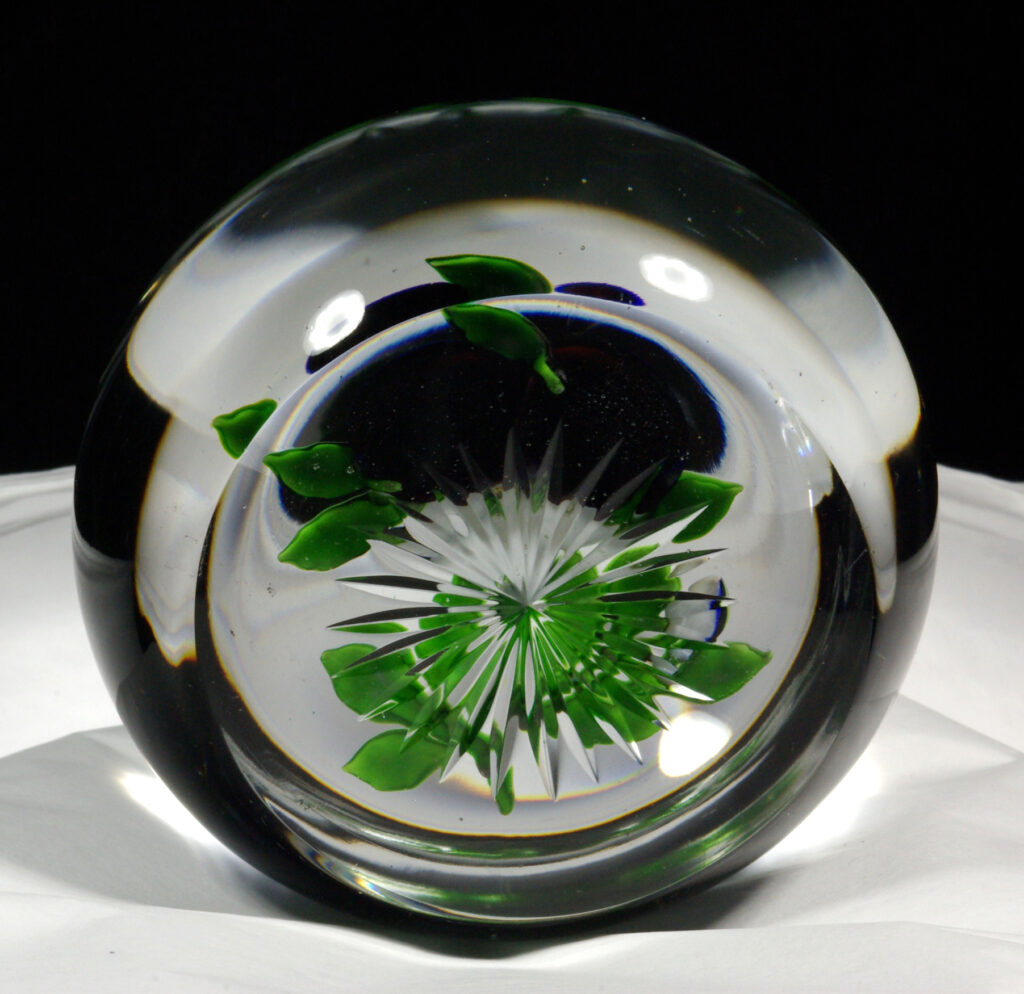
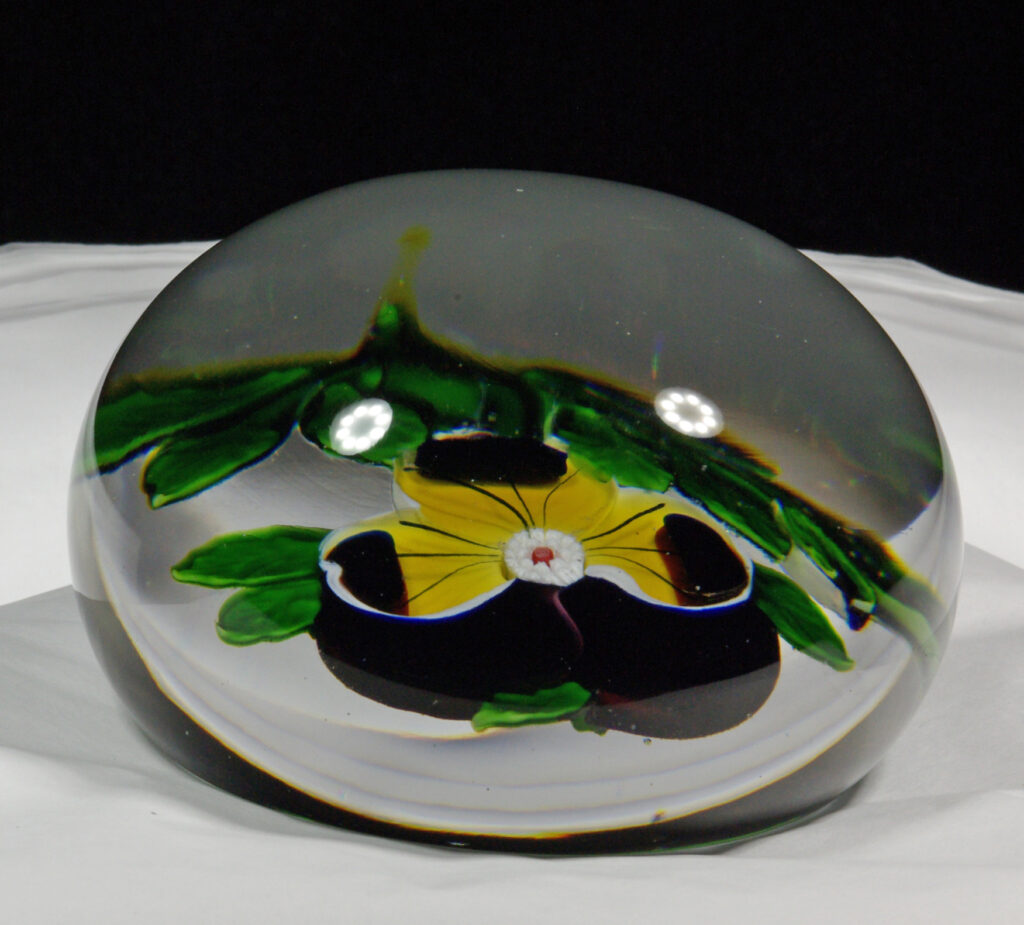
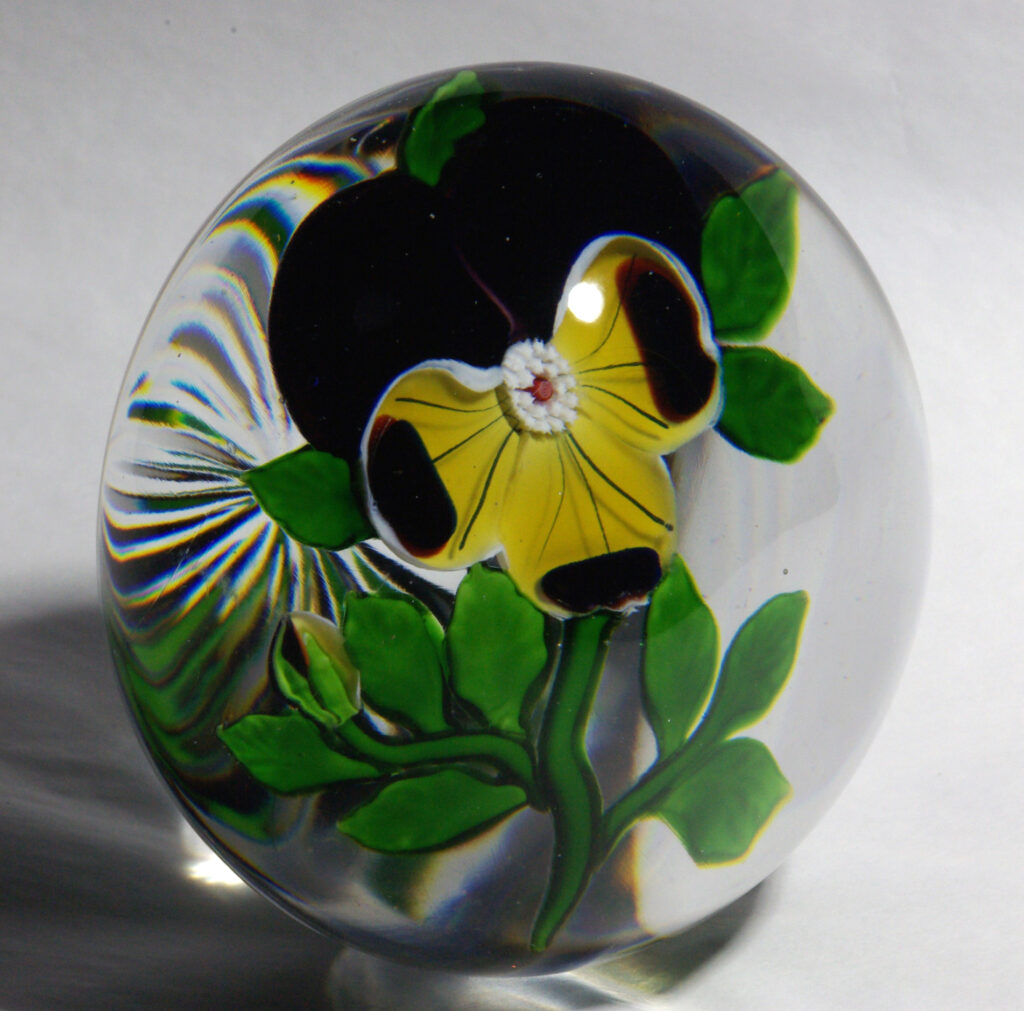
PW1762. Antique Baccarat Pansy and bud, circa 1850. Type 3. An excellent example. Beautiful colors and execution. Star cut base. !00% restored to perfection, as if it were made yesterday. Beautiful yellow petals. 2 15/16 inch diameter; 1 7/8 inches tall; one pound and one ounce. $950
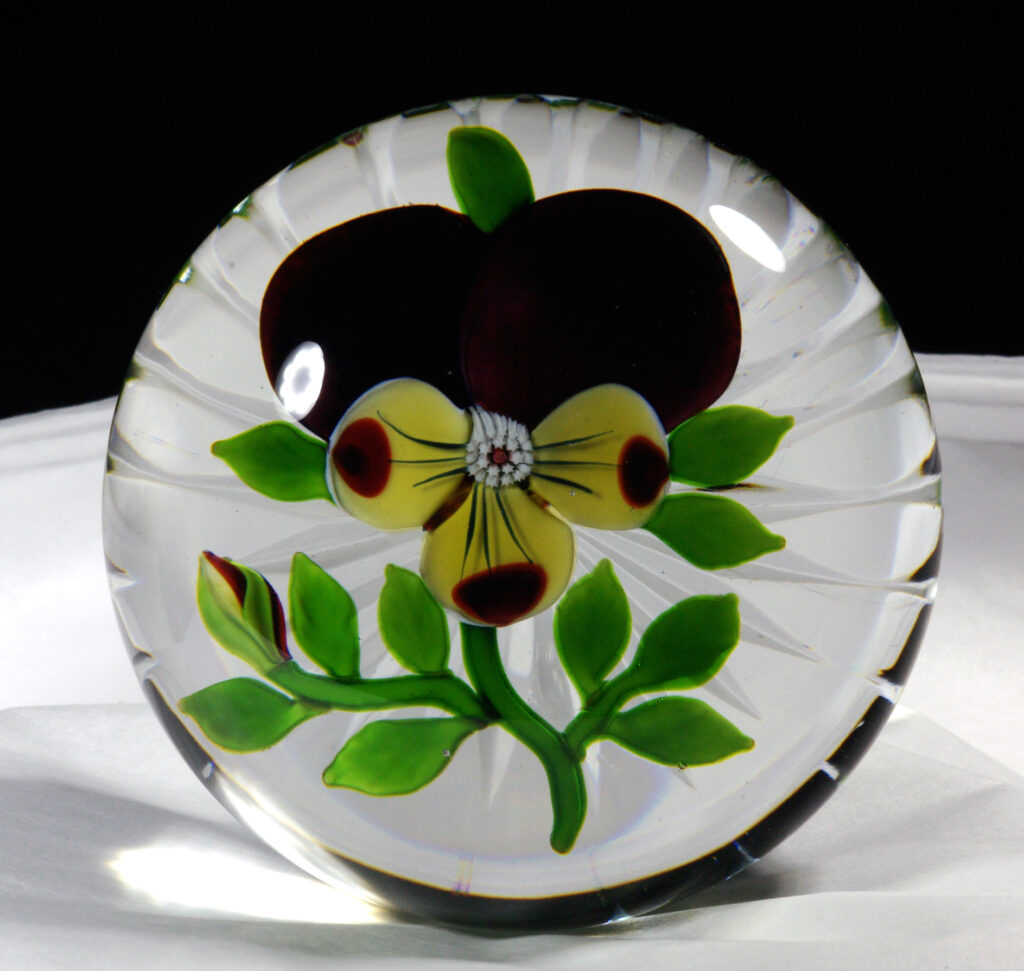
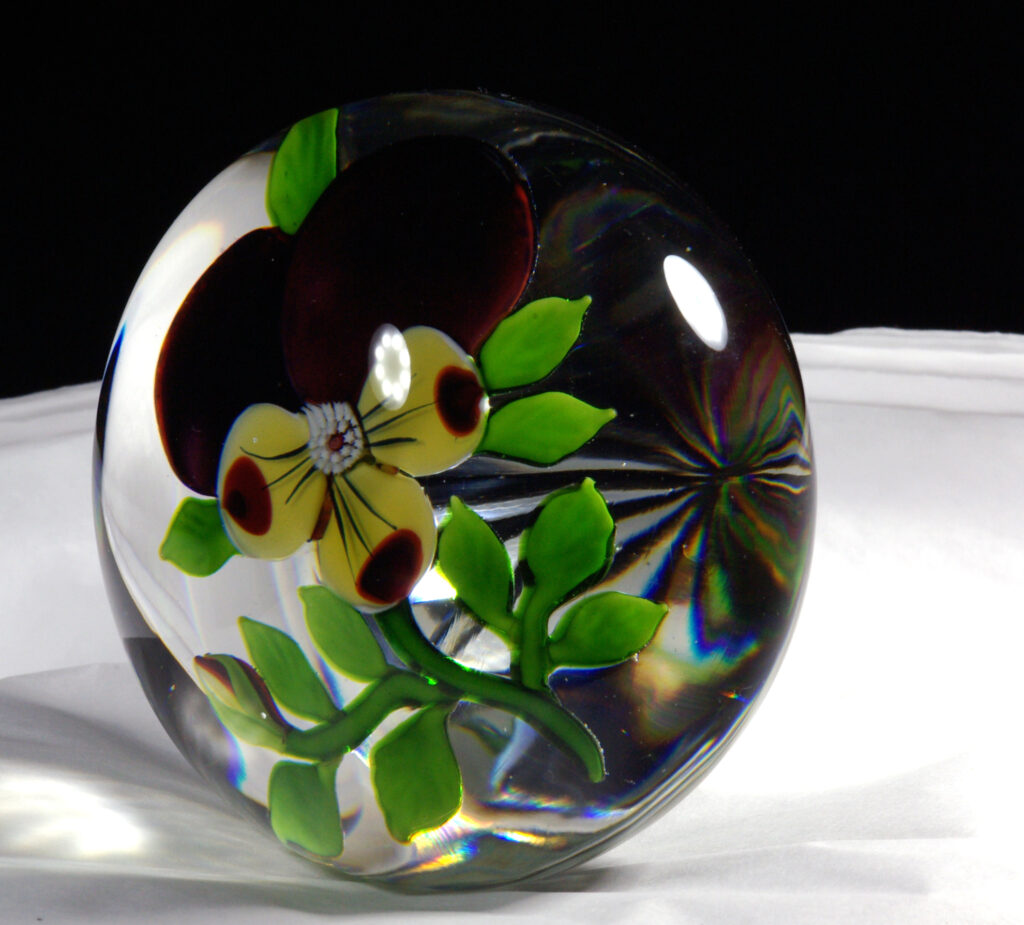
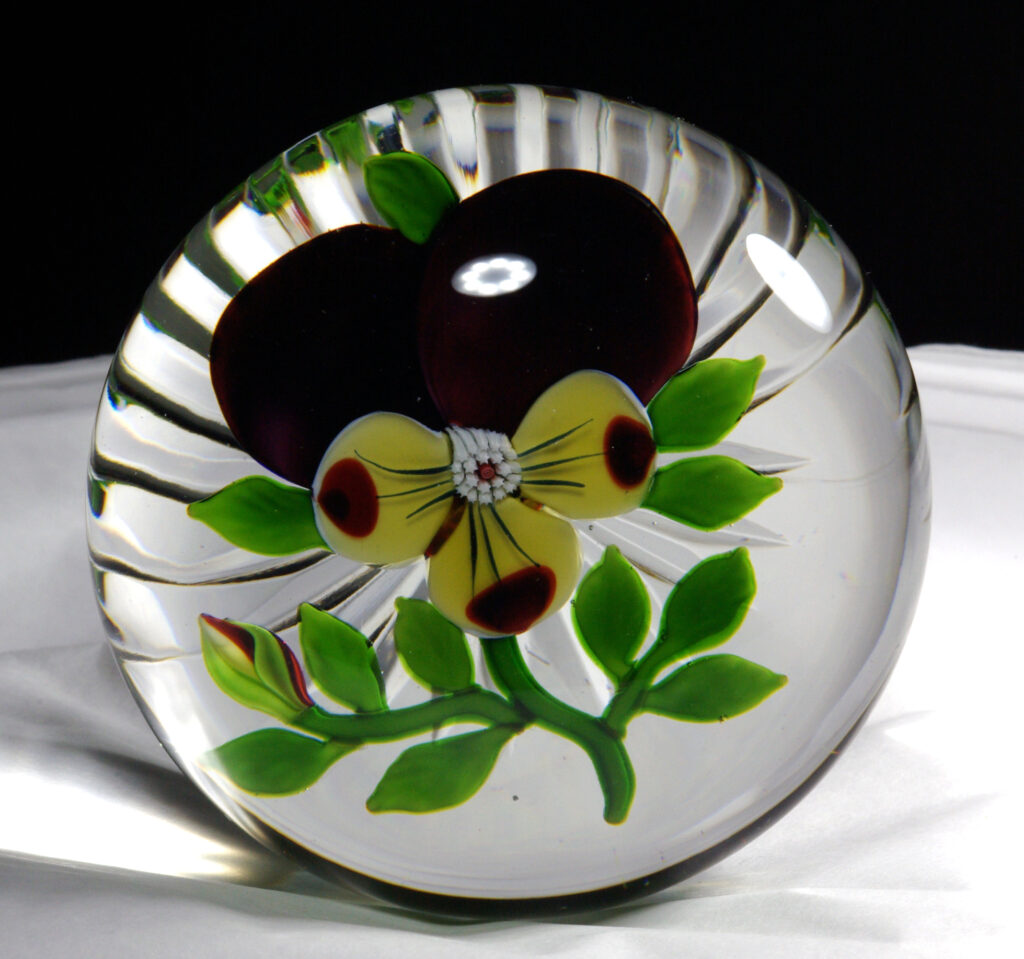
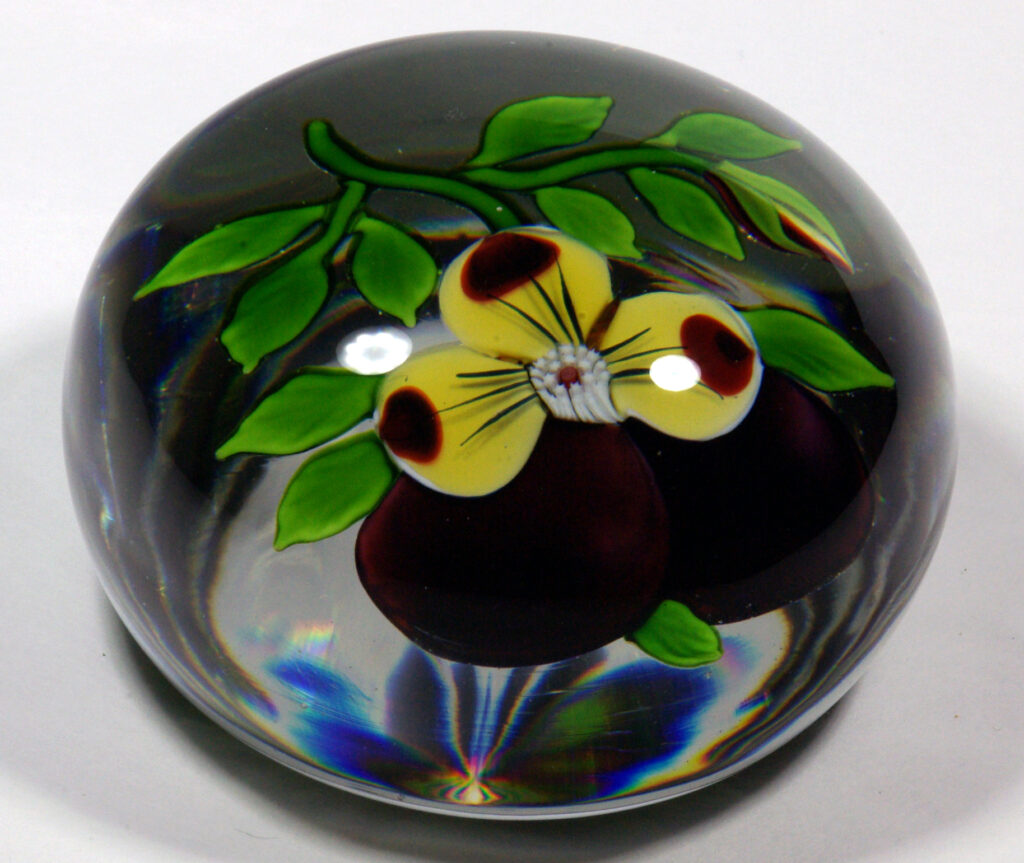
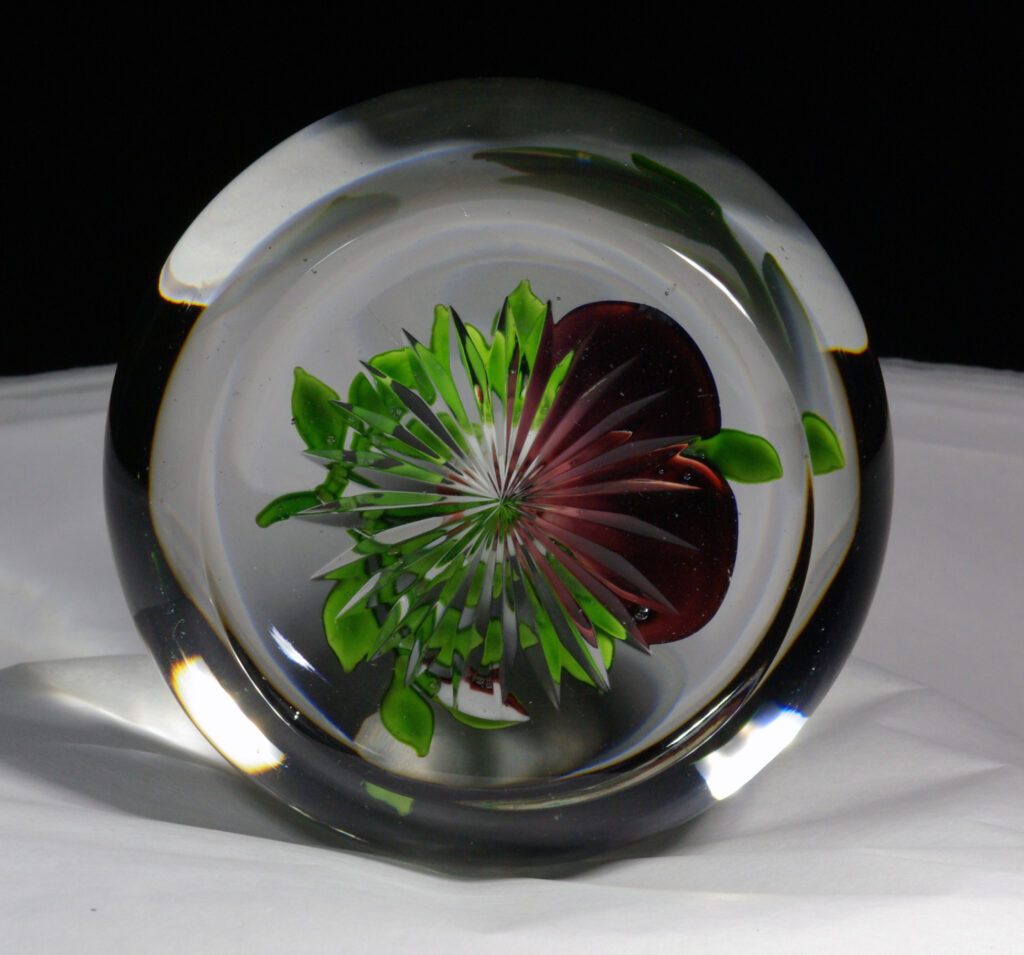
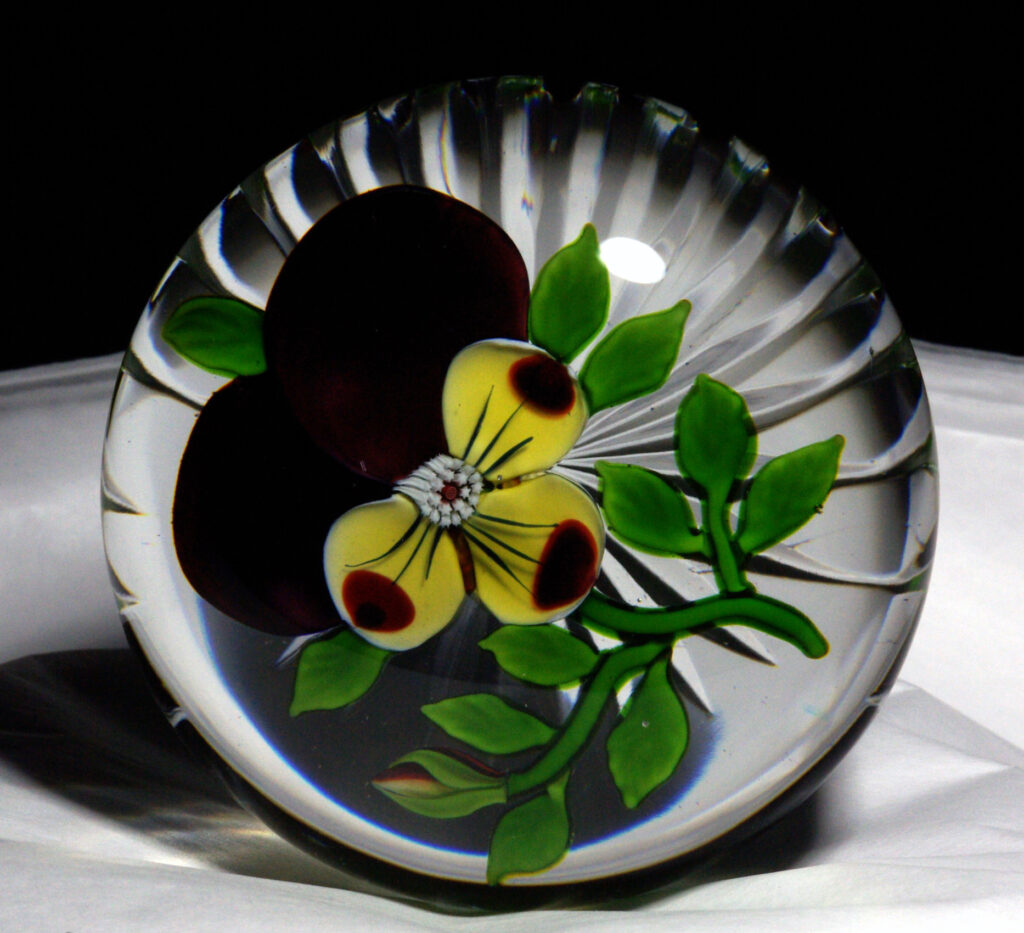
PW2359. Antique Baccarat Pansy and bud, circa 1850. Type 3. Very perfect. Star cut base. !00% restored to perfection, as if it were made yesterday. Beautiful yellow and velvet magenta petals. 2 7/8 inch diameter; 1 11/16 inches tall; fourteen ounces. $850
antique pansies, page 2
